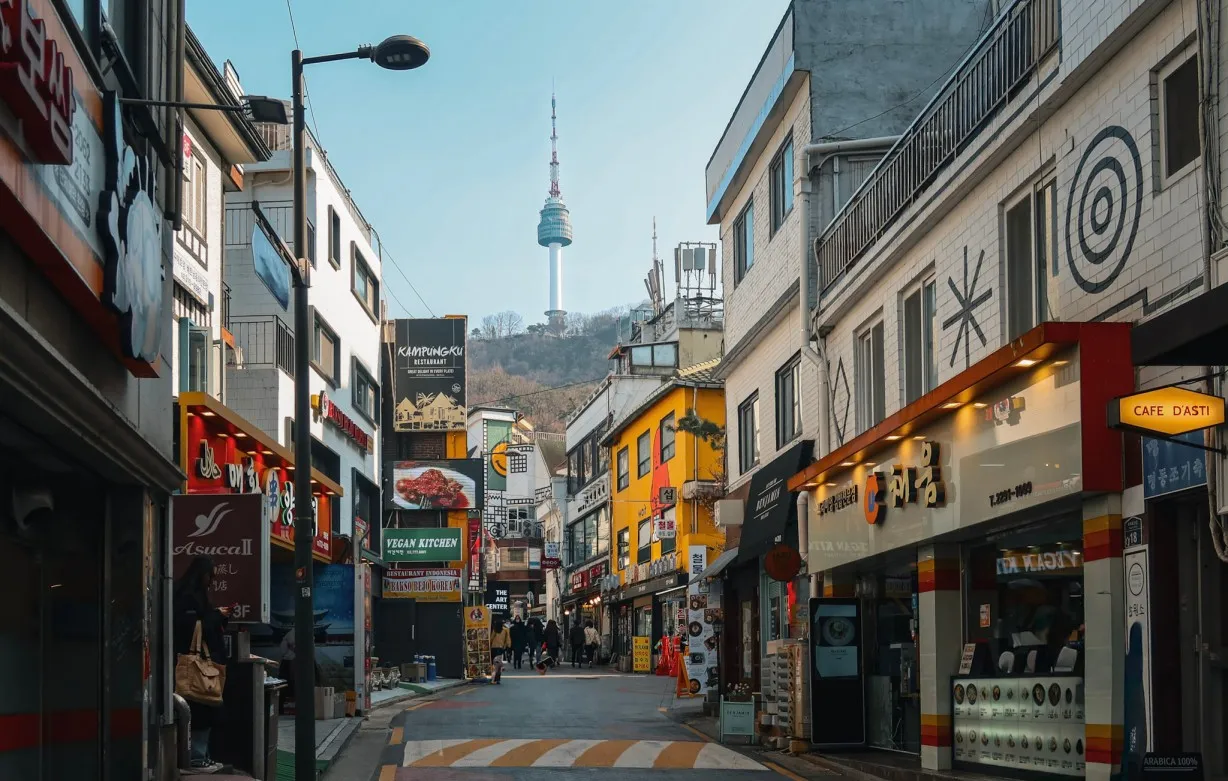
So you’ve booked your trip to Seoul and now trying to plan an epic itinerary? There are so many cool things to do in Seoul for first timers, that it can actually feel a little overwhelming when planning your trip. This list is full of my favourite things to do here.
Seoul is the biggest city in Korea, it is futuristic, clean, safe and has a sense of fun that is contagious. It is spread out with no distinctive centre, instead there are a number of districts each with their own character. For anyone visiting Seoul for the first time this can sometimes feel like a nightmare where planning your perfect trip. This Seoul guide has the best attractions, what to eat, where to stay and handy tips, so you can plan your trip with ease.
I spent 1 month exploring all the corners of this city, finding out what’s actually worth visiting, especially when you might only have a couple of days.
- Seoul Essentials
- Where To Stay In Seoul
- Map Of What To Do In Seoul
- 33 Things To Do In Seoul For First-Timers
- 1. Namsan Tower and Park
- 2. Bukchon Hanok Village
- 3. Gyeongbokgung Palace
- 4. Myeongdong Food Street
- 5. Jogyesa Temple
- 6. Cafe Hop Around Hongdae
- 7. Seoul City Wall
- 8. Ihwa Mural Village
- 9. Dongdaemun Design Plaza
- 10. Starfield Library / COEX Mall
- 11. Gangnam Style Statue
- 12. Bongeunsa Temple
- 13. Explore The Shopping Streets Of Gangnam
- 14. DIY At Art Monster
- 15. Bar Crawl In Itaewon
- 16. Spend A Day In Itaewon
- 17. Gangchon Railway Park
- 18. Baseball Game at Jamsil Stadium
- 19. Insadong Culture Street
- 20. Chicken + Beer Street
- 21. Bukhansan National Park
- 22. Photobooths
- 23. Korean BBQ
- 24. Gwangjang Market
- 25. Seoul Cheonggyecheon Ruins
- 26. Drinks On Euljiro Nogari Alley
- 27. National Museum Of Korea
- 28. War Memorial Of Korea
- 29. Video Arcades
- 30. HBAF
- 31. Customisable Bag At Wappen House
- 32. Namdaemun Market
- 33. DMZ
- How To Get Around Seoul
- Seoul FAQ
- Related Posts
Some links in this post are affiliate links, which means if you make a purchase I may earn a commission at no extra cost to you
Seoul Essentials
Travel Insurance: Medical care is expensive for foreigners in Korea, remember to have insurance in place prior to leaving your home country. I recommend True Traveller for EU/UK citizens and World Nomads for anyone outside of here.
Airalo is a super convenient e-sim that you can just download to your phone for mobile data! Prices start from $4.50.
Korea Train Express Pass: Unlimited rides on the KTX trains, passes are from 2 to 5 days.
12Go is the easiest way to book any buses, trains, or ferries around South Korea. It’s also super handy to have your tickets on your phone.
Save money with the Seoul Go City Pass which gives you access to 3 – 7 attractions and tours.
Where To Stay In Seoul
The most central areas for first time visitors to stay in Seoul are Hongdae, Myeongdong, and Insadong. As Seoul is so spread out, it can take some time to travel between each area. For example Hongdae to Gangnam takes 1 hour with two different subway lines.
One key thing to note is that the subways all stop running at 12 am. If you plan to go to bars and clubs then it would be less stressful to stay in a nightlife area such as Hongdae.
Myeongdong centrally located, famous for food, shopping and at the foot of North Seoul Tower, Myeongdong is a great all-rounder for first-time visitors to Seoul.
Hongdae is hip and trendy, it generally draws a younger crowd due to its proximity to a University. There are incredible restaurants and cafe options, along with shopping and a small amount of street food.
Insadong is a great choice for travellers looking for traditional food and art The area is known for tea rooms and craft boutiques, it is within walking distance to Gyeongbokgung. Although it gets quiet at night Eujliro 3 is a short walk away, which has lots of trendy and lively bars.
Best Hotels In Seoul
- RYSE: luxury in the heart of Hongdae. Features a gym and rooftop bar.
- Oasis Hongdae City View: spacious suites perfect for families and longer stays.
- L’Escape Hotel: award winning Parisian style boutique hotel. Would make for a romantic stay for couples in Seoul.
- Nine Tree by Parnas: budget friendly rooms close to Seoul Tower. Complimentary coffee in the 11th floor restaurant is a nice touch.
- DAAM: stay in a traditional hanok in Insadong. Breakfast is included in all rates, this hotel features a hot tub and self serve laundry facilities.
Map Of What To Do In Seoul
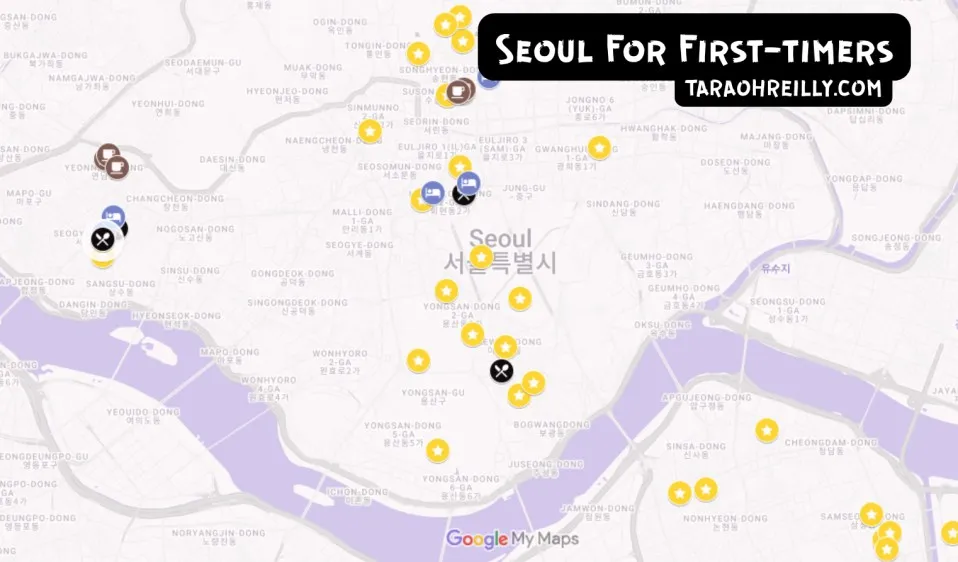
👍 Google Maps doesn’t work in Korea, not all businesses show and only the directions on public transport are accurate, Naver and Kakao Maps are much more reliable.
33 Things To Do In Seoul For First-Timers
1. Namsan Tower and Park
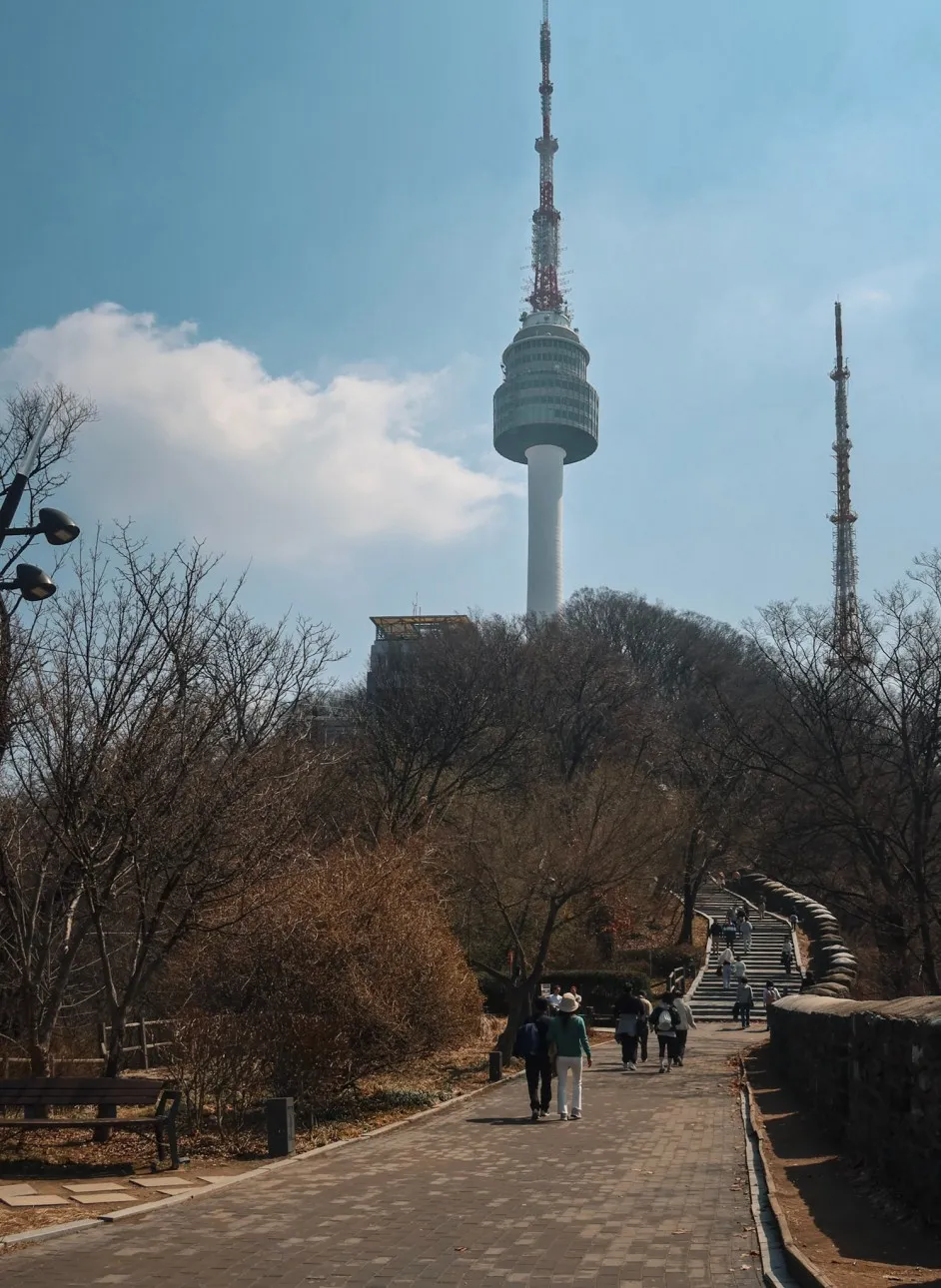
Seoul’s famous Namsan Tower (also called N Seoul Tower) is a must see while in the city. At 279 metres (915 feet) you can spot the tower around various parts of the city. The tower itself has 360 views across the city.
Getting to the tower is an adventure in itself, you can either do a short hike or jump on a cable car.
The walk involves climbing up lots of steps for 15 – 20 minutes. The route is well marked out with plenty of resting points along the way, making it suitable for most individuals. At the top is the tower, a temple, love lock fences and many cafes/restaurants.
I recommend taking some time to explore Namsan Park. There are various trials, the pine trial was my personal favourite. We loved it so much we did it twice.
Alternatively, the cable car is a 3 minute journey in a glass carriage. I would suggest the cable car for anyone short on time or with accessibility issues.
Tickets for both observatory & cable car can be purchased here.
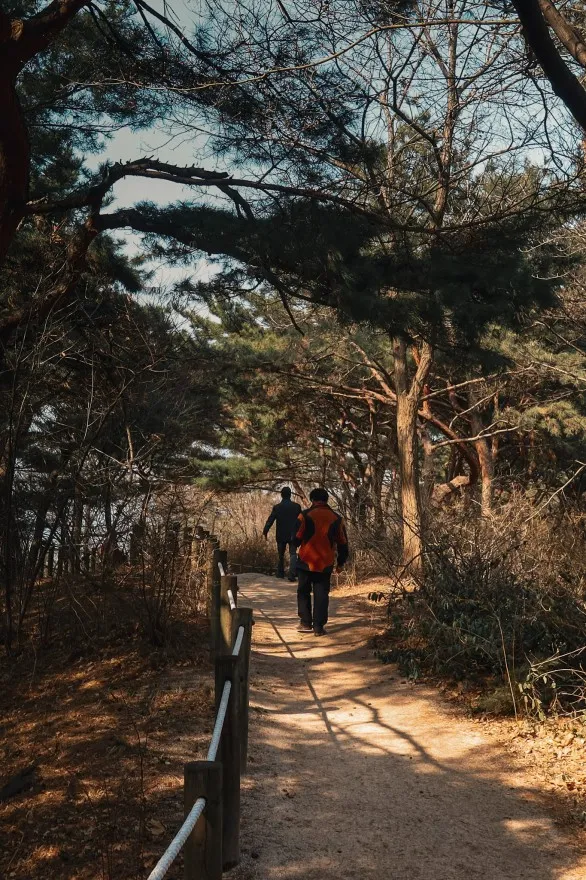
2. Bukchon Hanok Village
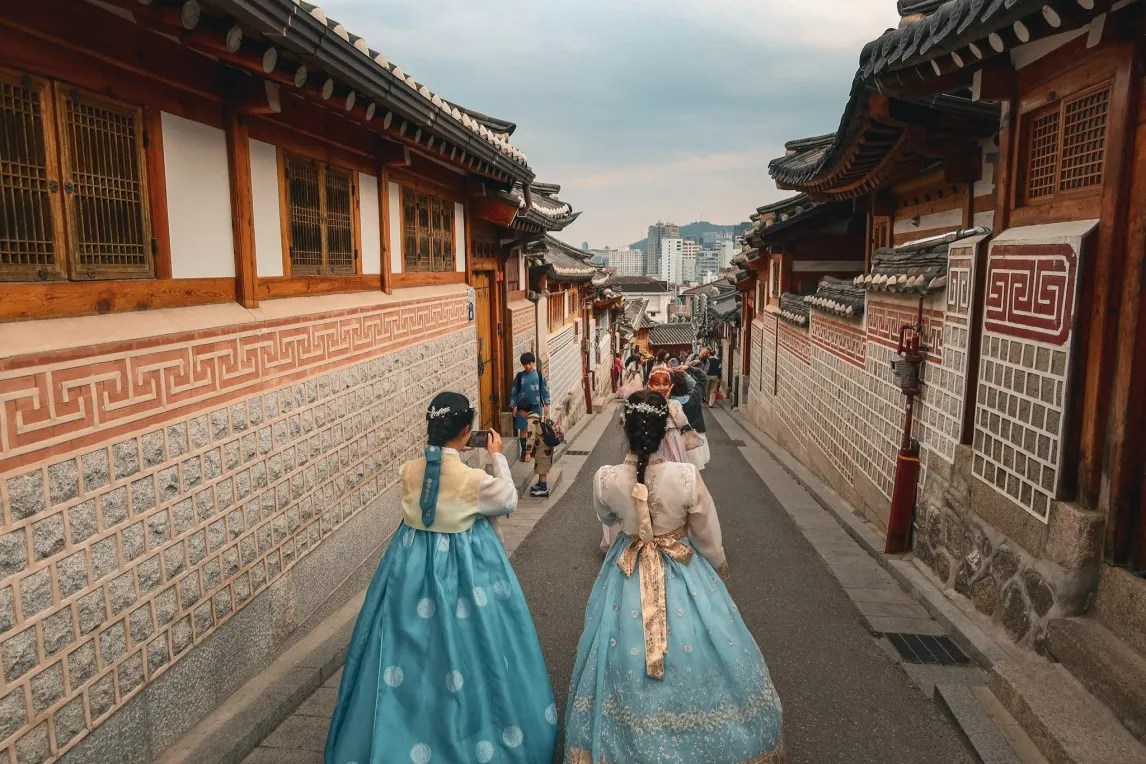
Ever dreamed of stepping back in time, will in Bukchon Hanok Village you can kind of do this. Here you’ll find a traditional Korean village, where the houses (called hanoks) have been preserved from the Joseon Dynasty dating back to 1392.
The village is characterised by its steep narrow alleys and distinctive gabled roof houses. The hanoks are built with a strong wooden frame with the walls consisting of hanjeong, a combination of natural materials like clay and sand to insulate.
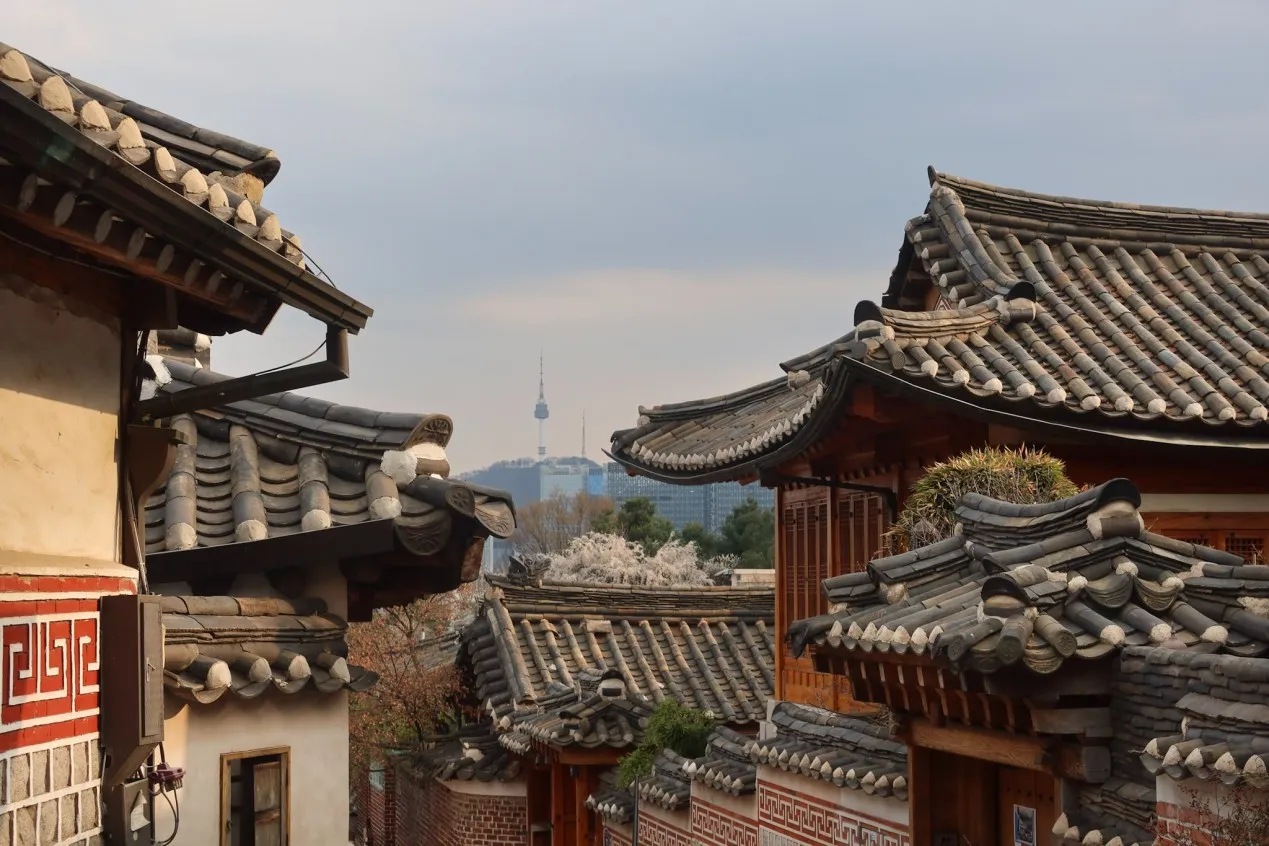
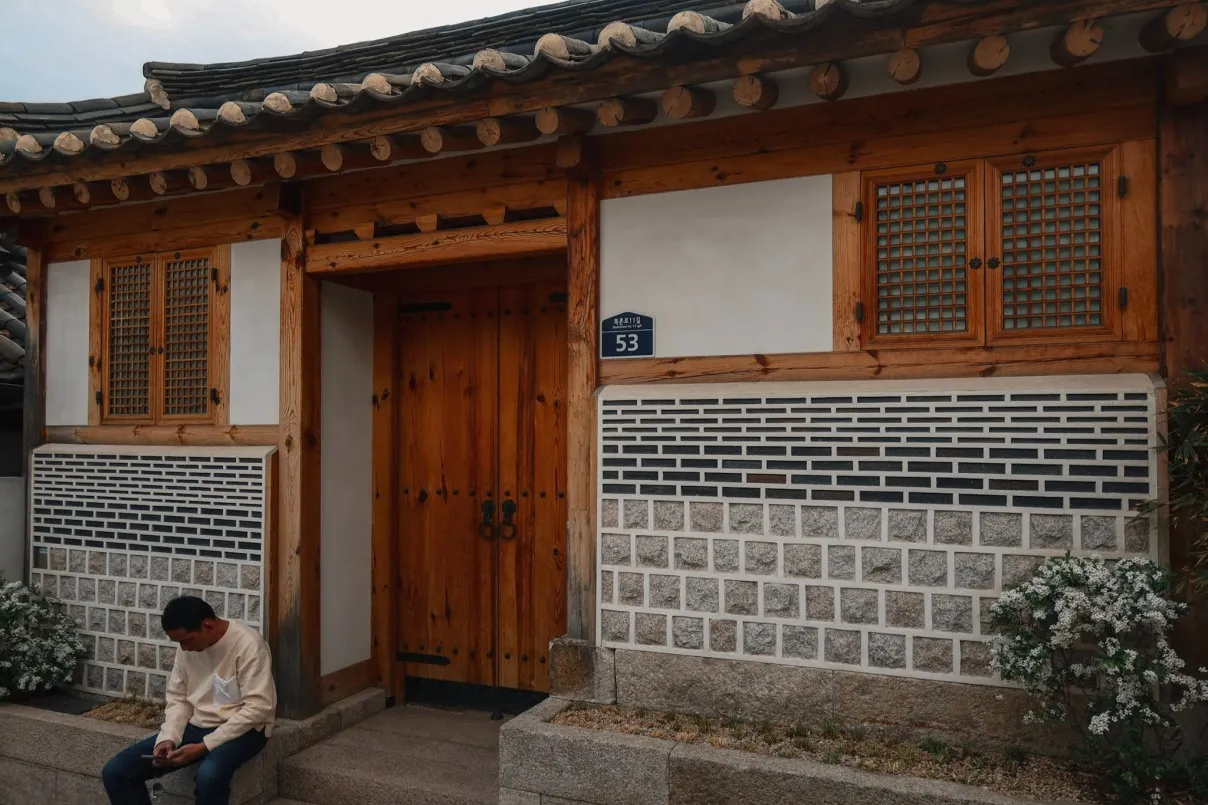
It’s an incredibly scenic but can get very busy, especially on the popular Bukchon-ro 11-gil. I advise getting here early if you would prefer a more peaceful experience. However, if you arrive later in the day there are many alleyways without crowds, you will just have to wander a bit to find them.
I found the village very similar to Kyoto, with so many people taking photos and expensive food. However, it really is a beautiful place, that I don’t think you should miss out on.
Bukchon Hanok Village is mostly residential, although it is packed full of tourists, people call this place home. Please be mindful to keep the noise low and to not block anyone’s door.
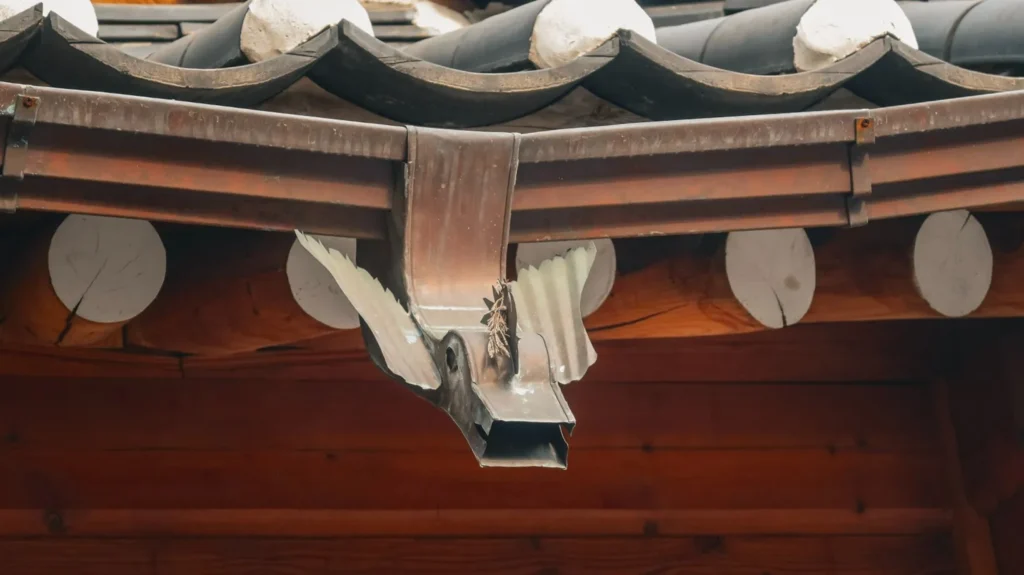
Here are just some things you can do at Bukchon Hanok Village:
- Rent a traditional hanbok (traditional dress)
- Take part in a tea ceremony
- Learn how to make delicious kimchi at this kimchi masterclass
- Browse the boutiques of Samcheong-dong
- Visit the house of Baek Inje, the doctor who founded Inje University Seoul Paik Hospital.
- Explore the cafes along Bukchon-ro. I recommend Cafe Onion Anguk.
3. Gyeongbokgung Palace
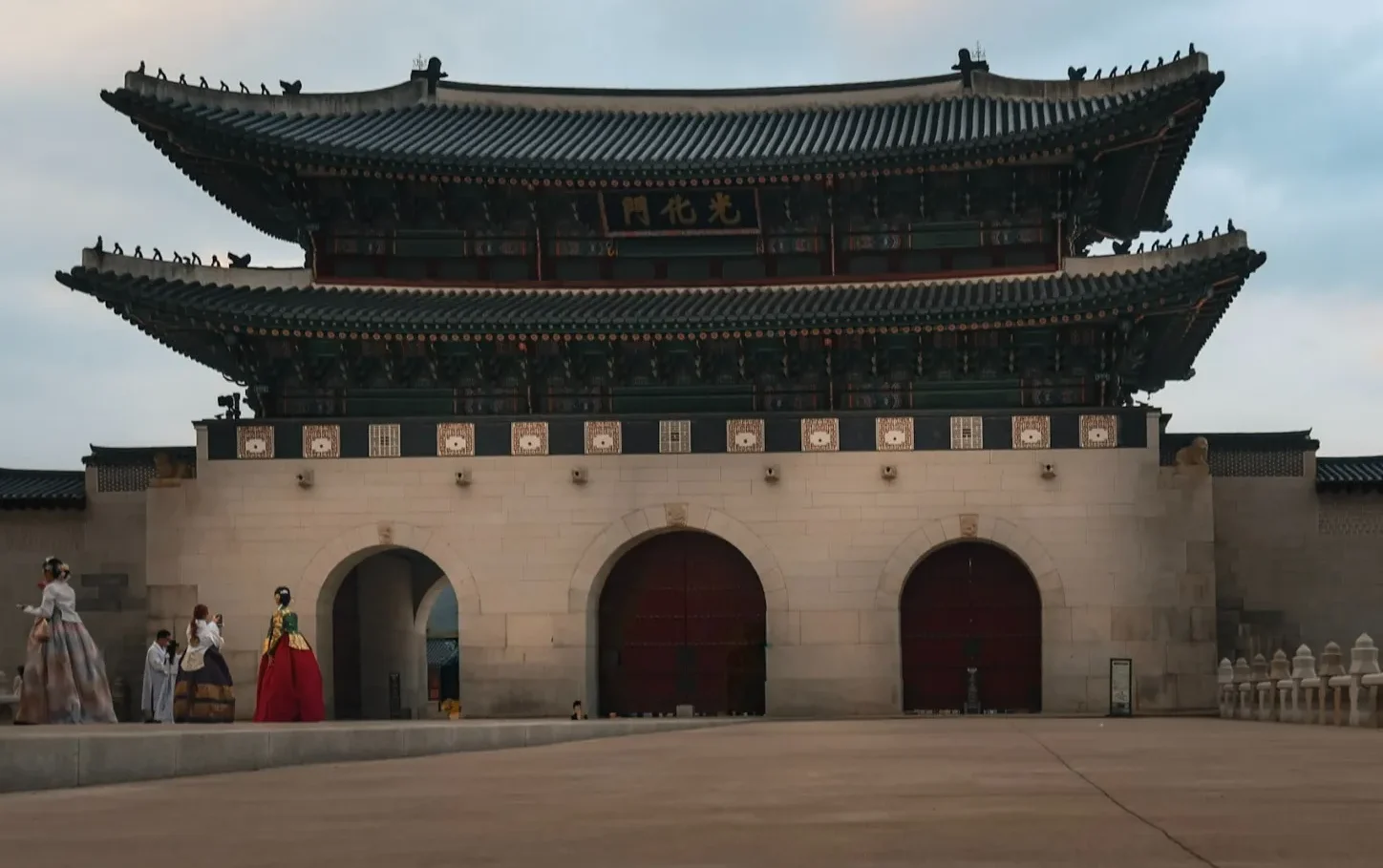
Originally built in 1395 during the Joseon Dynasty, Gyeongbokgung Palace has been destroyed and rebuilt twice over the years. Firstly during the Japanese Invasion of Korea in 1592, and then again during a fire in 1876 but it was not properly restored until 2007. The palace that stands today is identical to the original in 1395.
The grounds are massive, there is so much to see. I would give yourself 2 – 3 hours to see it all.
The main highlights are Gwanghwamun Gate, Hyangwonjeong Pavilion and the changing of the guards ceremony which occurs twice a day (10 am and 2 pm ) at Gwanghwamun Gate.
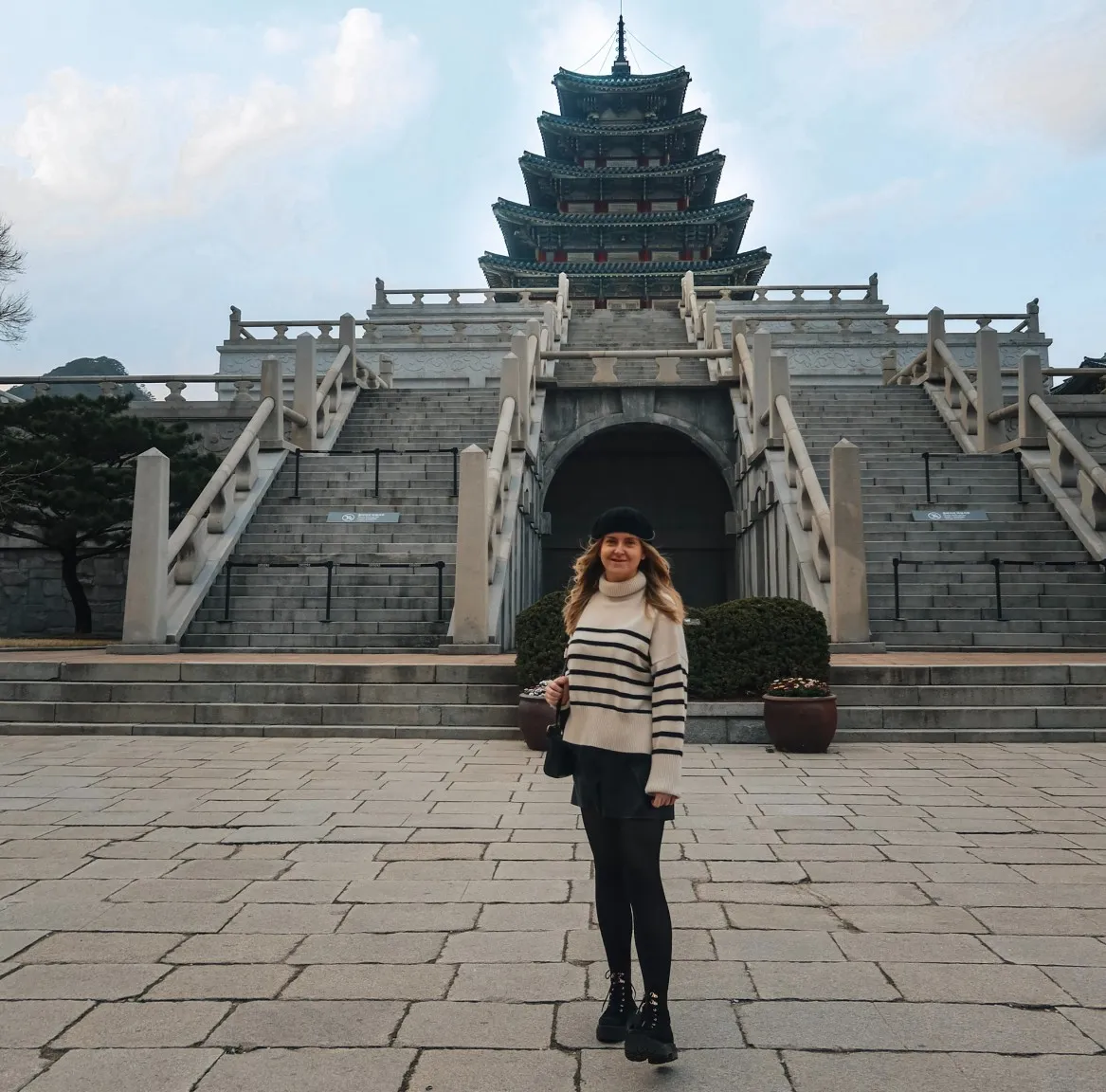
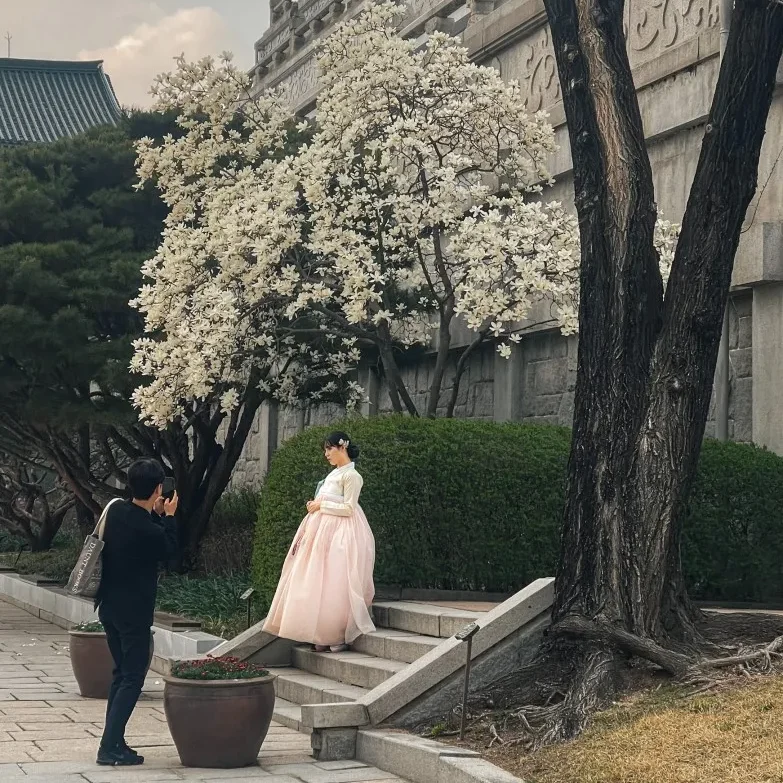
Many people wear a hanbok here, not only will you end up with amazing photos but you can also enter all the palaces for free. Solo travellers might like to book a photoshoot at the palace with a professional photographer.
👍 If you want to get more out of your visit to Seoul’s temples then this 3-hour tour of Jogyesa Temple, Gyeongbokgung, and Cheongwadae Sarangchae might be of interest.
4. Myeongdong Food Street
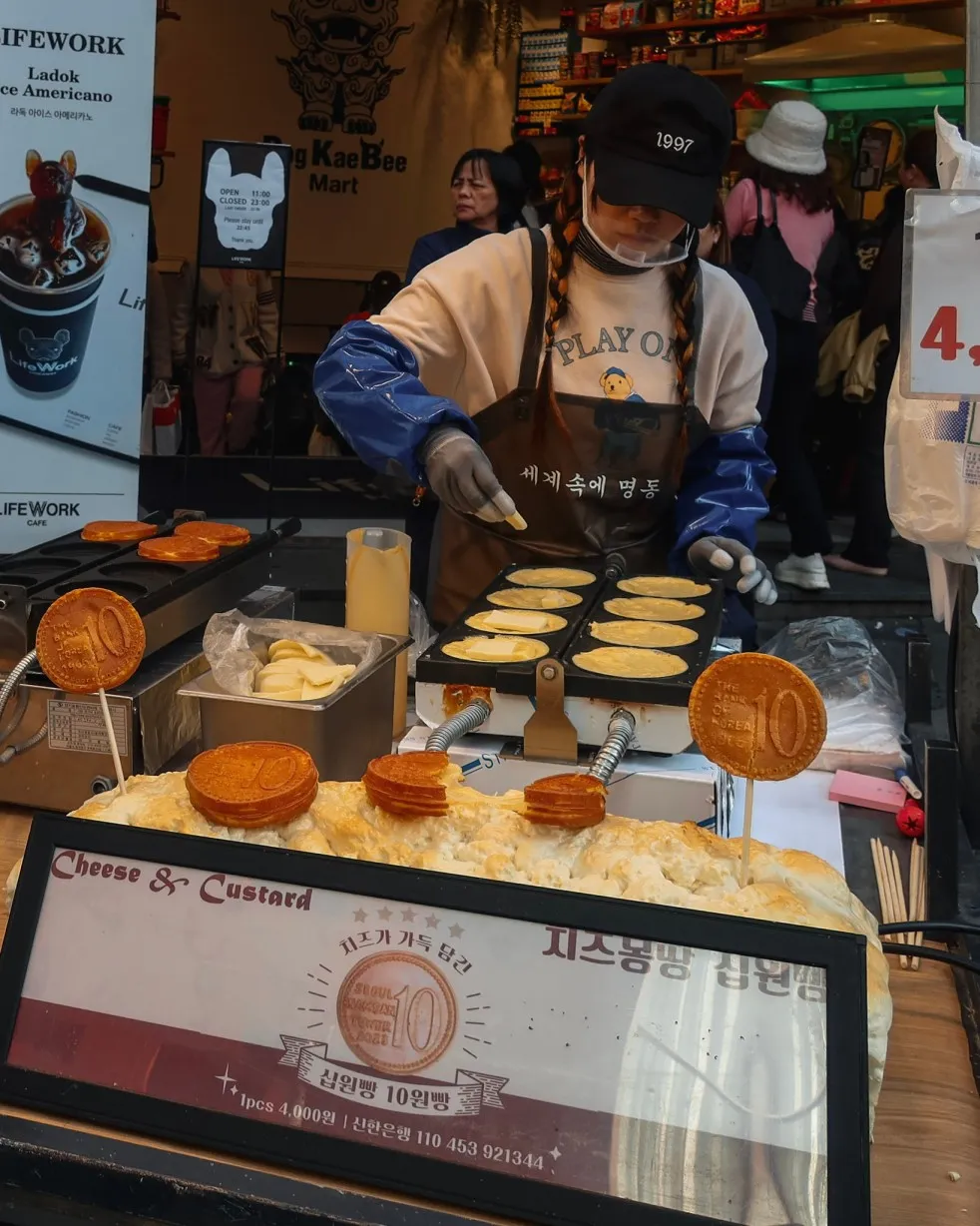
Myeongdong is a buzzing area with many shops and bars, but the spotlight is on the food stalls that line its pavements. Although open throughout the day, this street comes alive at night.
At about 5 pm the street gets crowded with locals and tourists looking to eat some delicious street food. It is such a vibe under the neon lights of Myeongdongs shops, watching the vendors cook up a storm of Korean dishes.
The type of food you can find here is egg bread, k-dogs, deep-fried crab, hotteok, spicy fish cakes, Korean savoury pancakes, gooey cheese coins and so much more. Spending an evening eating around the streets of Myeongyong is one of the best things to do for a first timer in Seoul.
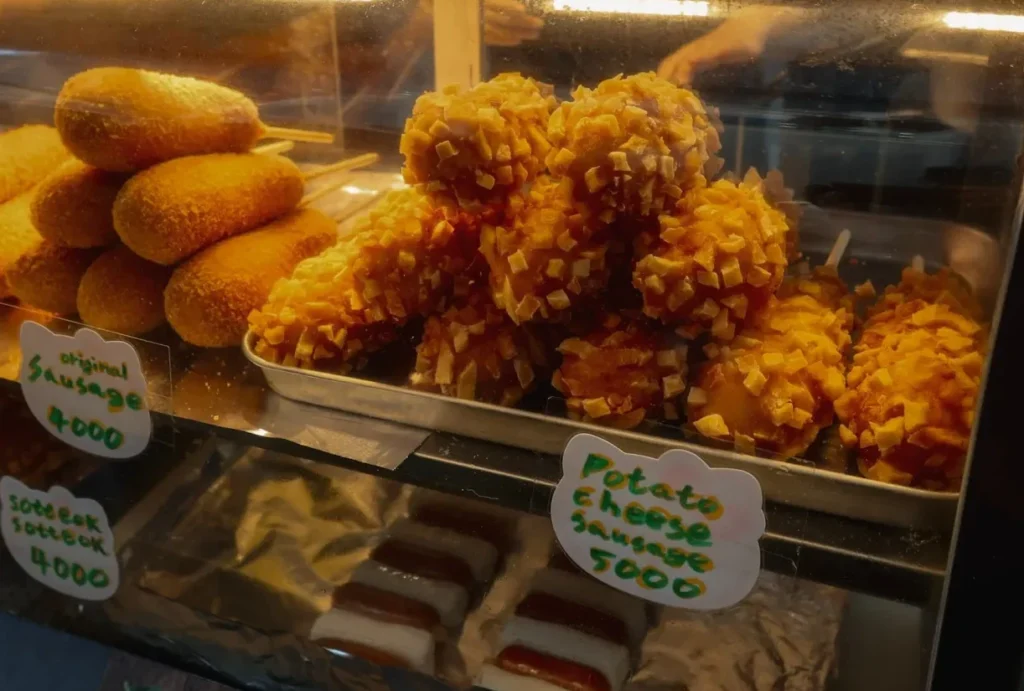
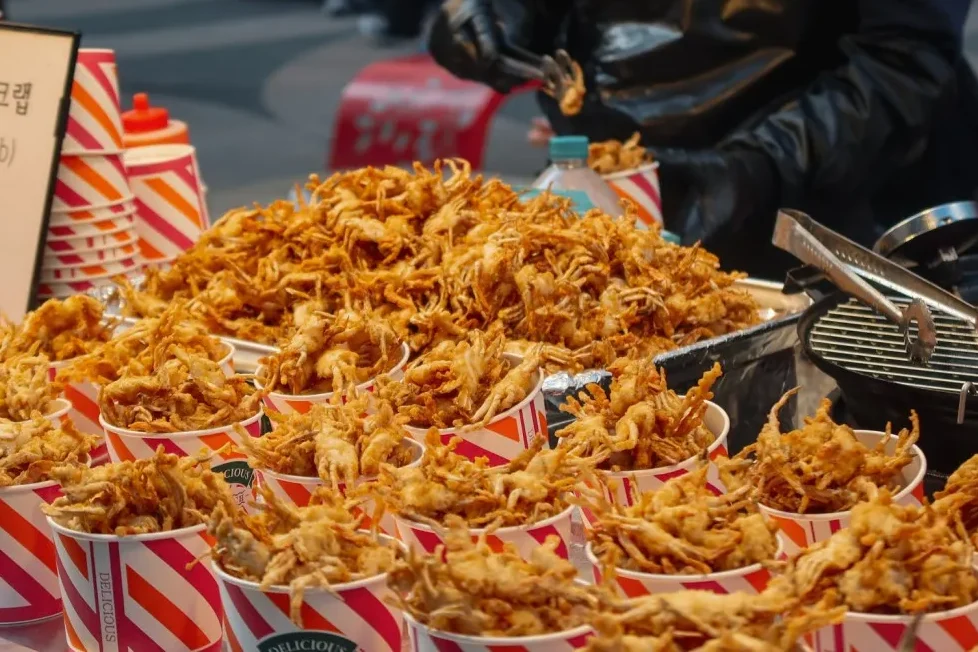
5. Jogyesa Temple
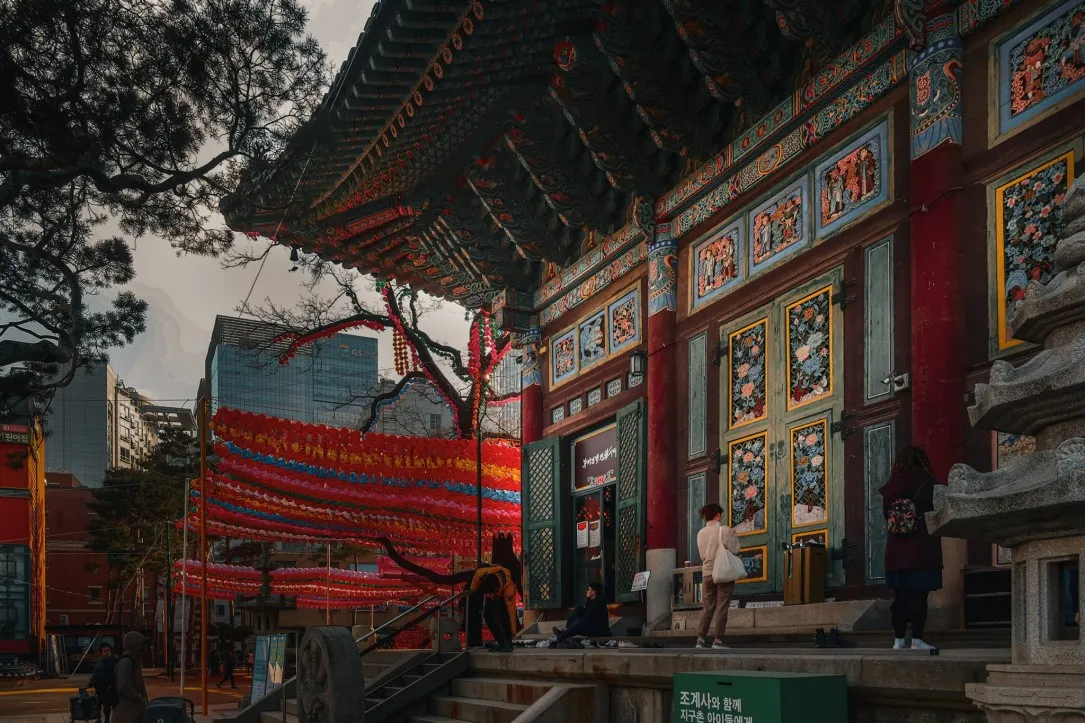
Often considered Korea’s most important temple, Jogyesa is a free thing to do in Seoul. Once the headquarters for the Jogye Order, the largest branch of Korean Buddhism, the temple dates back to 1395.
Despite its location in the bustling Insa-dong district, frequented by both tourists and locals, Jogyesa remains a calm and relaxing space. You can pray in the main hall or sit and watch others pray.

The temple acts as a venue for many Buddhist events, if you visit during the week leading up to Buddha’s birthday, you’ll be treated to a spectacular sight: the temple is adorned with numerous hanging lanterns around the courtyard’s giant Chinese Scholar Tree that is 450 years old.
6. Cafe Hop Around Hongdae
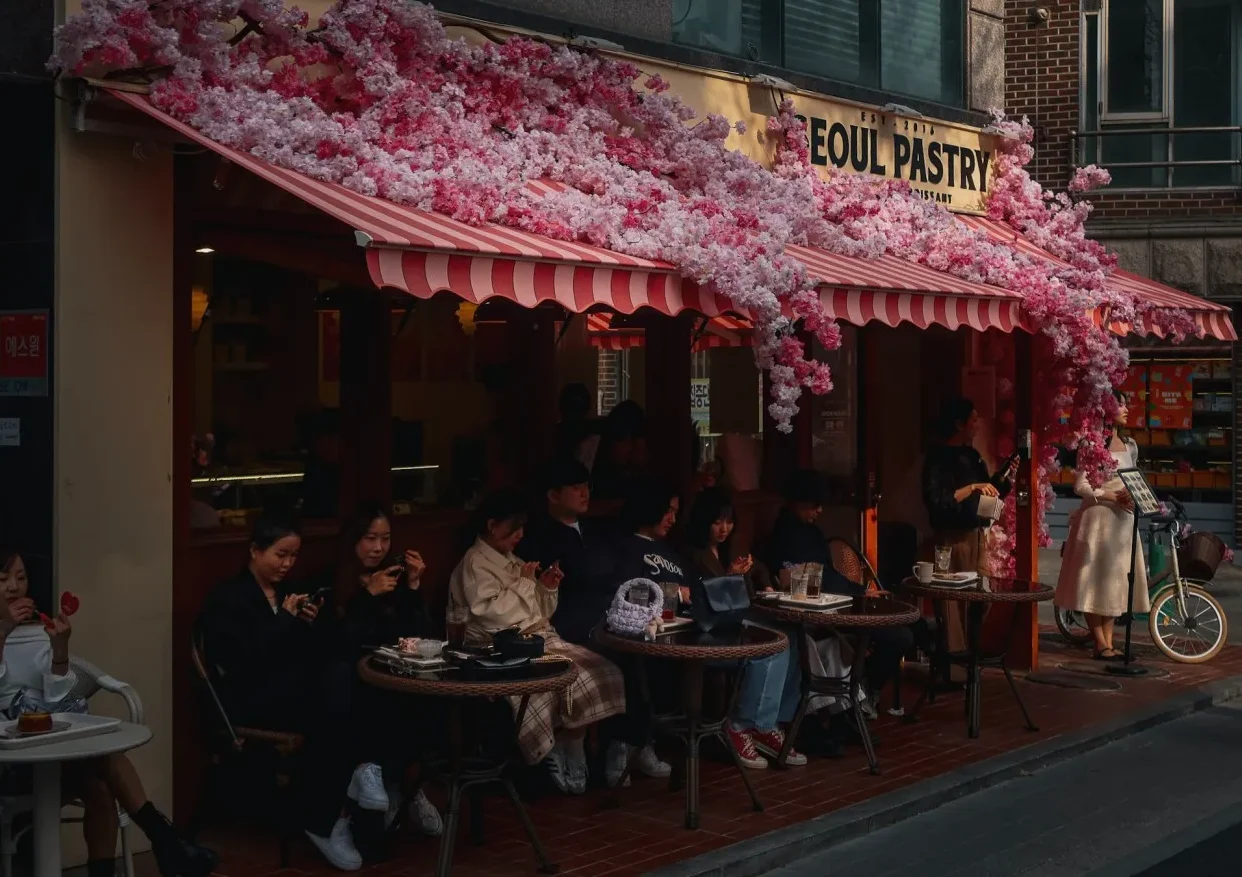
Seoul has got to be the world’s unofficial capital of cafes. Every few steps is an aesthetic cafe with the cutest cakes and desserts. I found Hongdae to have the most “wow” cafes, it was like stepping into a K-Drama with all the cute couples sharing a cake and coffee.
Koreans are known to cafe hop, I come from Ireland where we bar hop and I didn’t think the concept could be applied to anything but a bar, I was wrong! Basically, you spend the day going from cafe to cafe and eventually end up with a twitchy eye from all the caffeine. It is the best way to experience the different cafes in a short space of time. Although I don’t expect you to spend a whole day in cafes I recommend 2 to 3 hours.
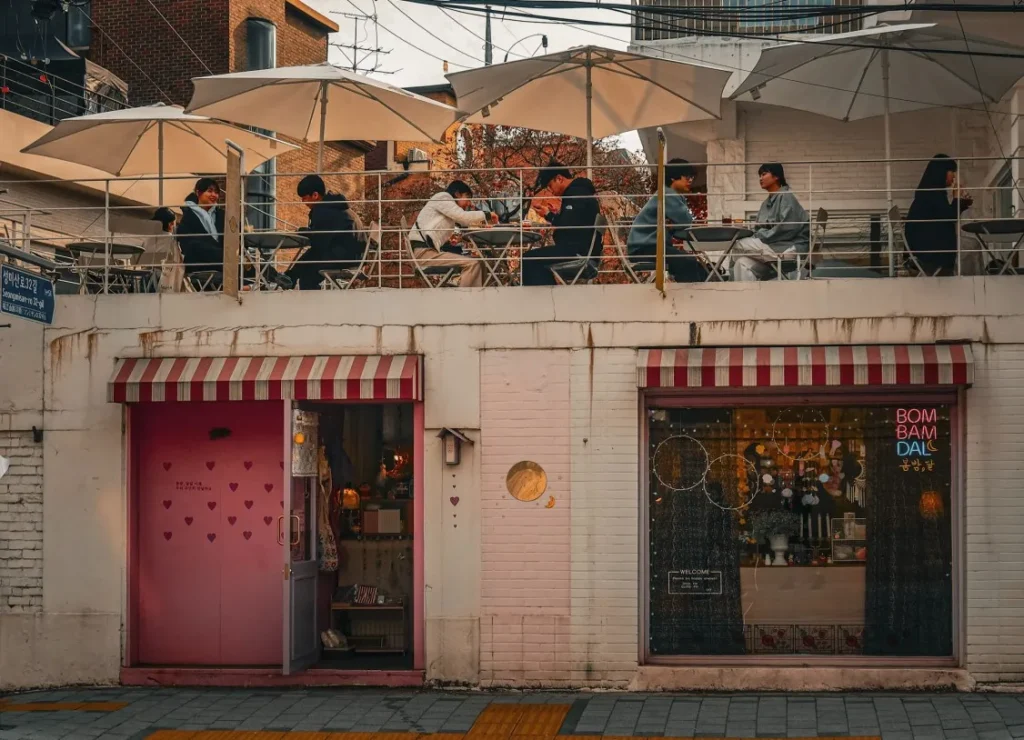
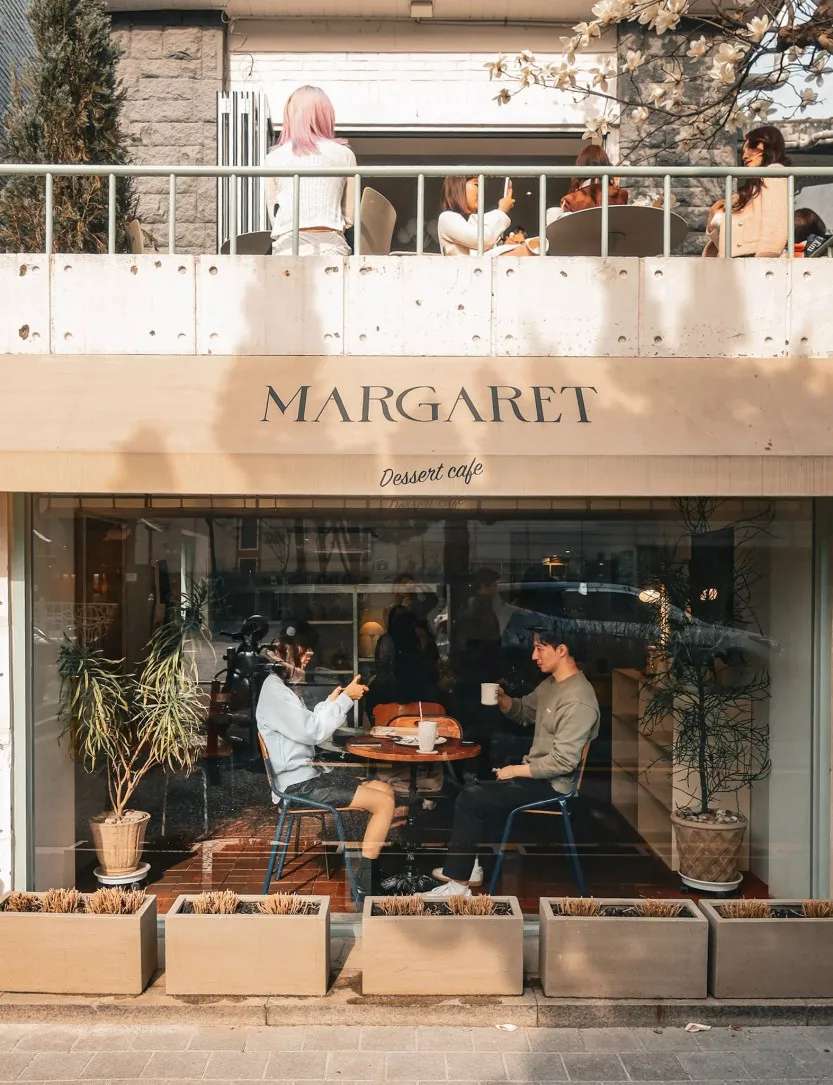
There are so many amazing cafes, I don’t think you could really choose wrong. I loved Pie In The Shop, MintChoco World and Coffee Libre.
Yeonnamdong is a cute area with small boutiques and many dining options. I recommend Yeonnamdong Kombucha for a healthy and refreshing pick me up.
👉 Read my in-depth guide to the 32 Best Cafes In Seoul here.
7. Seoul City Wall
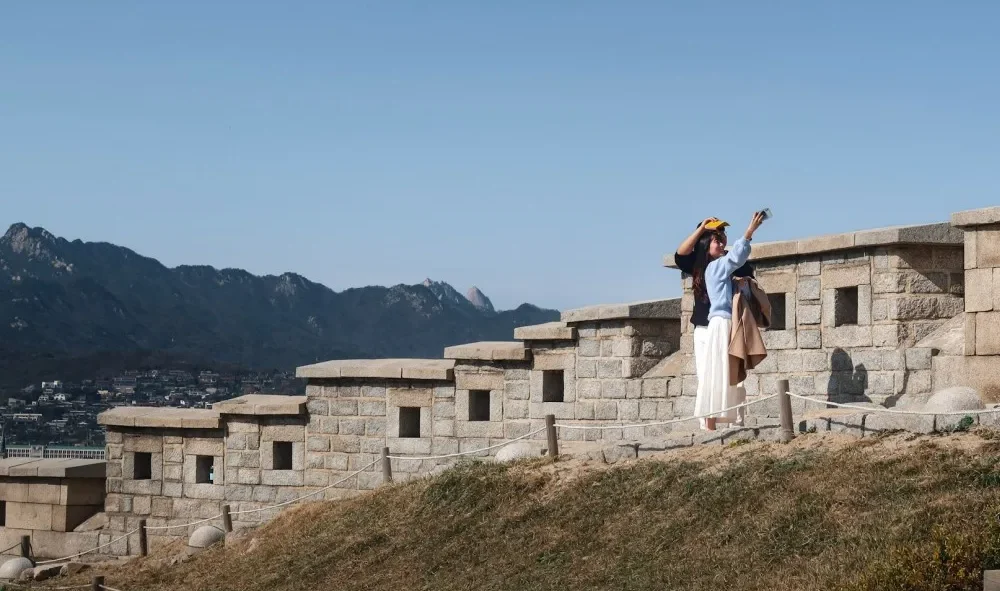
As cosmopolitan as Seoul is, you are never too far from nature. One of the best hikes a first-timer to Seoul can do is the city wall.
Seoul’s city wall is a 19 km stretch that goes across four mountains (Baegak, Naksan, Namsan and Inwangsan). The wall was built as a defence system during the Joseon dynasty, there were originally four gates, however today only two remain in their original form: Sungnyemun and Heunginjimun.
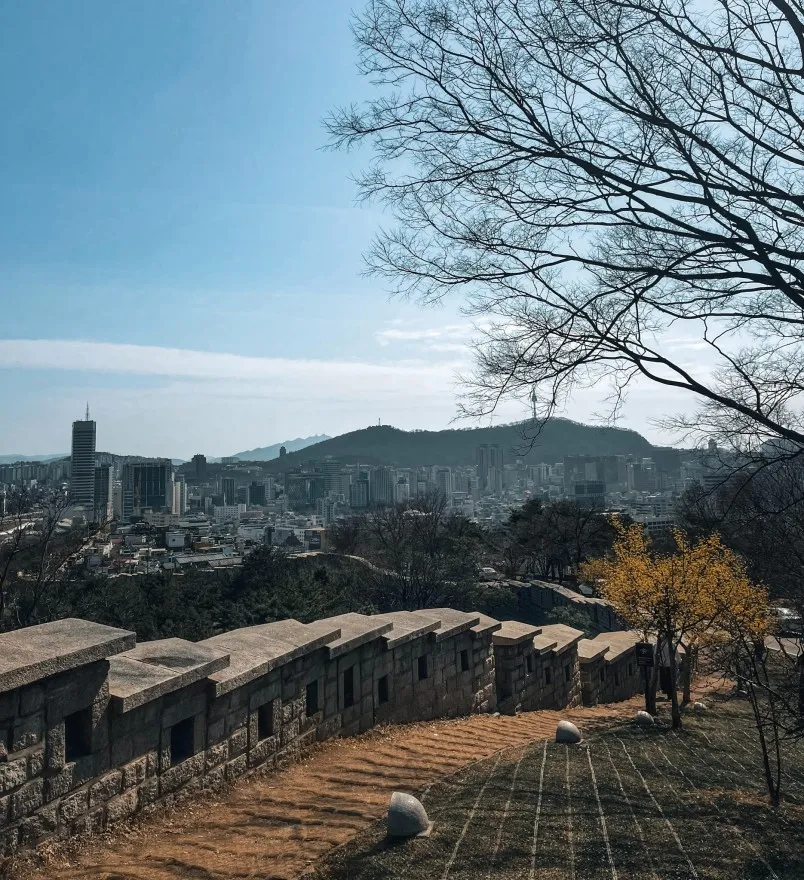
You can either walk the full 19 km or choose from the following six routes:
- Inwangsan: difficult; 4km
- Sungnyemun: easy; 2km
- Namsan: moderate; 4km
- Haeunginjimun: easy; 2km
- Naksan: easy; 2km
- Baegak: hard; 5km
If you only have a few hours I would recommend the Naksan route, which starts at Heunginjimun Gate and finishes at Hyehwamun Gate. This will take you through Ihwa Mural Village and Jangsu Village. This route is steep in some sections but overall an easy and enjoyable hike that takes around 2 hours.
8. Ihwa Mural Village
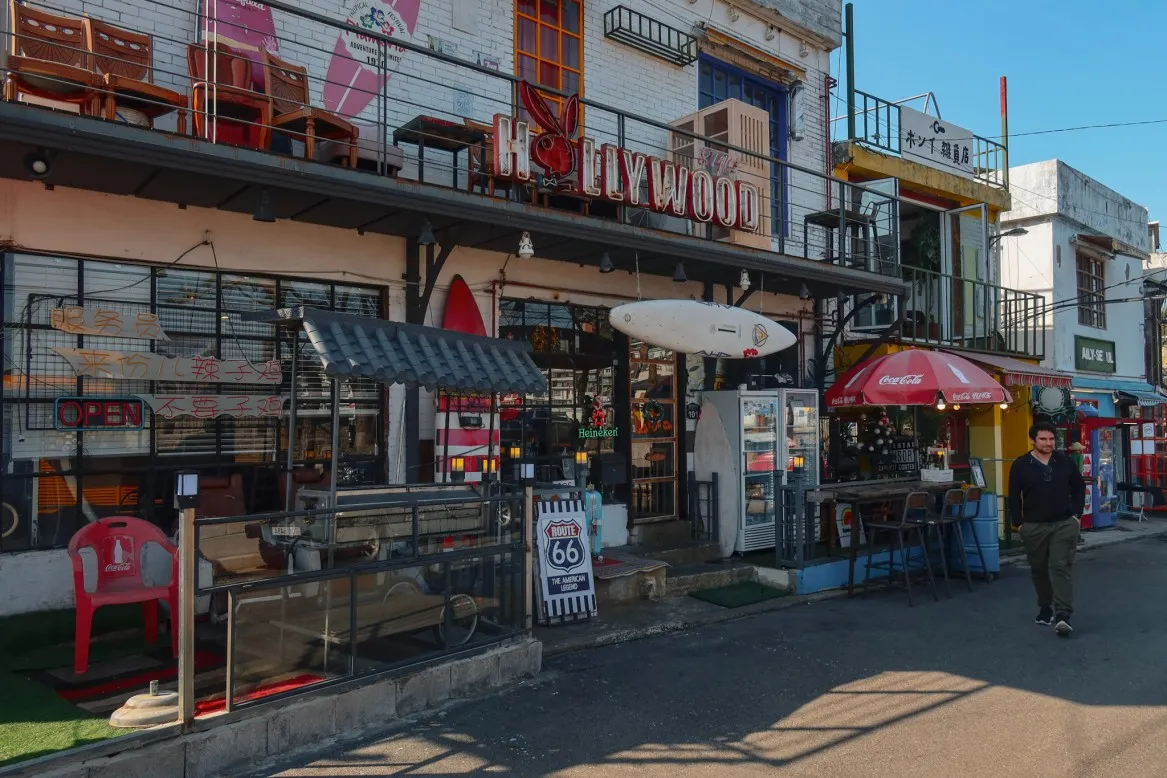
Once a low-income village where textile workers resided, during the nineties, Ihwa was due to be demolished but thankfully was given a new life by local artists who created art installations around the village. Although it breathed new life into Ihwa it also introduced too many tourists, annoying residents which resulted in most of the installations being destroyed. In 2015 a new project was introduced that focused on respecting the local residents rather than disrupting their daily life, and thankfully most of it still stands today.
Ihwa Mural Village is a quiet area with a more local vibe than I was initially anticipating. We visited on a Sunday and were surprised by the lack of tourists. If you search online you will likely find photos of the famous fish stairs however they have been painted over. Although the village is not as as colourful as it once was, it’s still arty and colourful but in a more understated way.
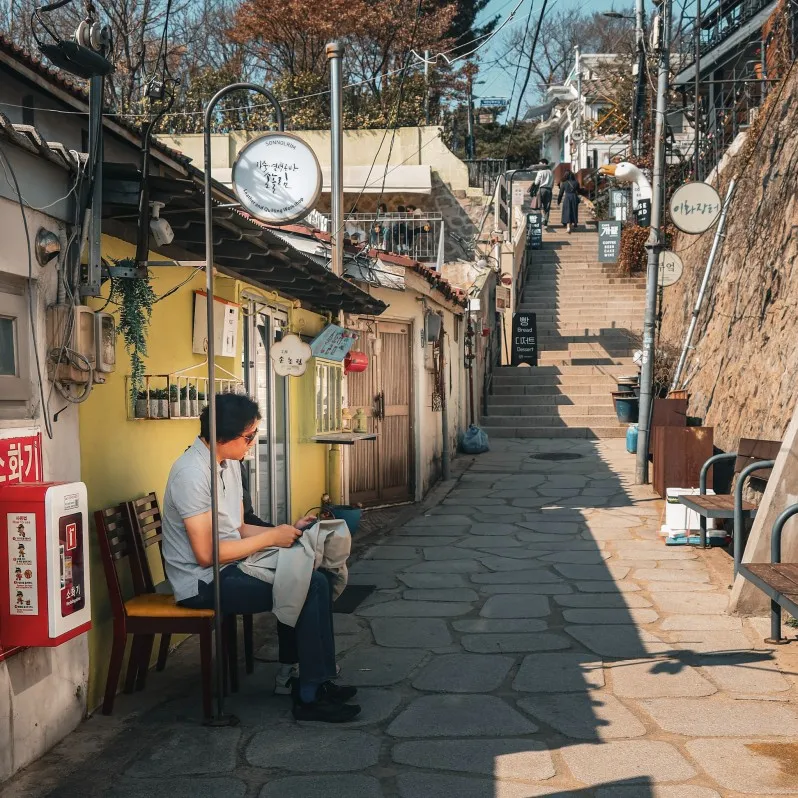

Overall it’s a nice area to explore and take photographs, there are also many cafes and small shops owned by locals. At sunset the views from a rooftop cafe can be incredible. Have fun wandering!
9. Dongdaemun Design Plaza
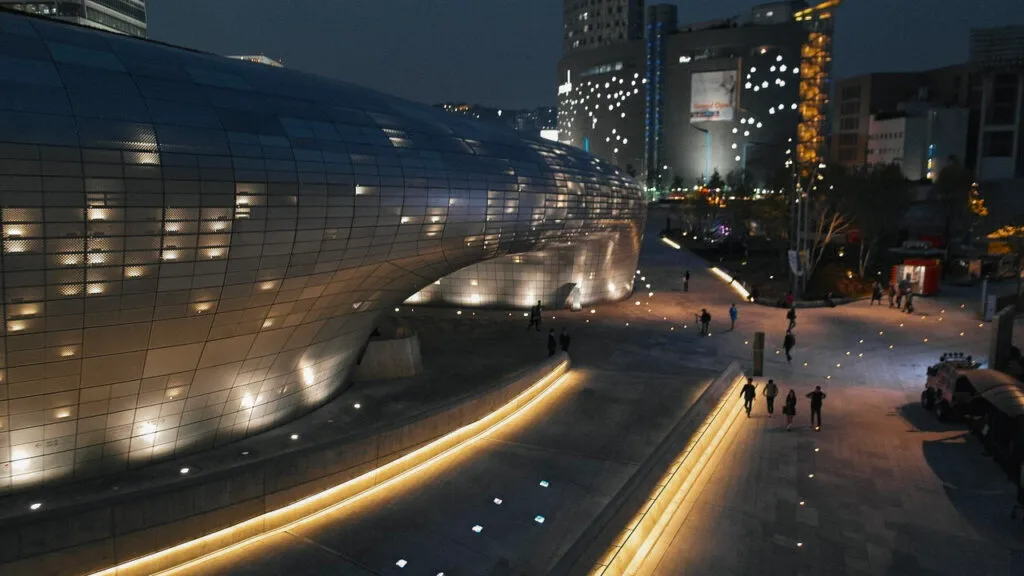
Located close to Ihwa Mural Village is the futuristic Dongdaemun Design Plaza designed by Zaha Hadid. The building hosts many different exhibitions throughout the year so check here for what is going on during your visit.
The building’s design is out of this world, akin to something from a sci-fi film with its curved glitzy grey exterior. No one could be blamed for mistaking it for a spaceship. Inside are a few shops and restaurants, you will likely not spend too long here but I recommend making a stop here to be truly wowed.
10. Starfield Library / COEX Mall
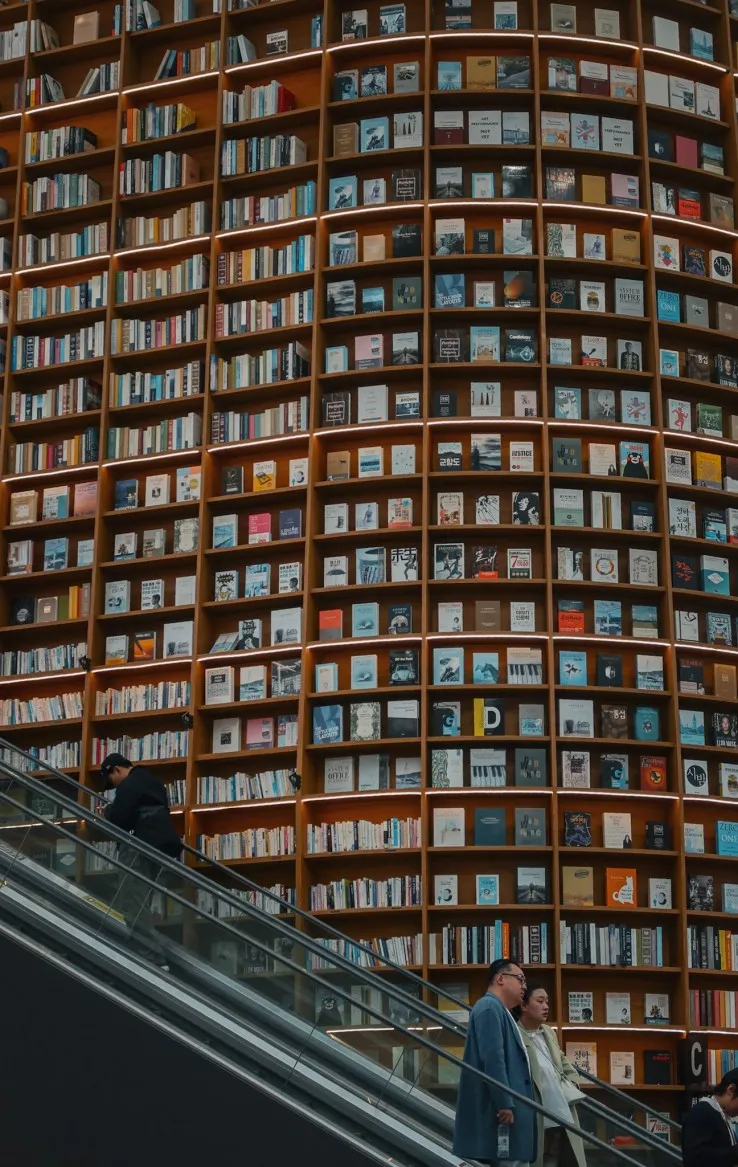
Far from the quiet lifeless rooms and dusty shelves of most libraries (at least the ones I have been to) is Starfield Library. Instead, this unique library is a colourful display of floor to ceiling books, illuminated by a large glass roof. The shelves go to a height of 134 metres (440 ft), and there is an escalator beside the largest shelf which helps you reach the books at the top, however this is an extremely popular photo spot so expect a backlog of people.
The selection of books is enormous with almost 70,000 books to choose from. The books are mostly in Korean but there are a few English books, you can check the information kiosks for where the English books are located. Anyone can grab a book from the shelf to read, you don’t need a membership but you do need to stay within the library. Along with books there are also magazines and ereaders.
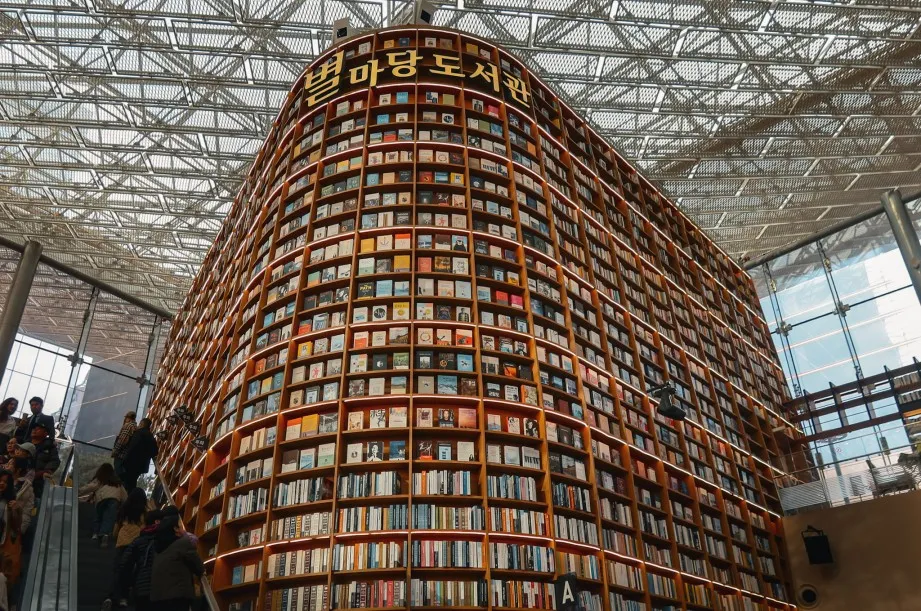
There are many seats to relax in, however, it gets very busy and therefore noisy so it can be a bit difficult to concentrate on a book. There are nice cafes upstairs and also on the ground floor around the corner. Billy Angel (upstairs) has delicious cakes.
Aside from the library, COEX mall is worth a look around. It is a massive mall, it has the title of the largest underground shopping centre in Asia. I don’t recommend spending all day here unless you want to shop, but there are some cool things you can find here like the COEX Aquarium with 650 different sea species across 183 tanks.
11. Gangnam Style Statue
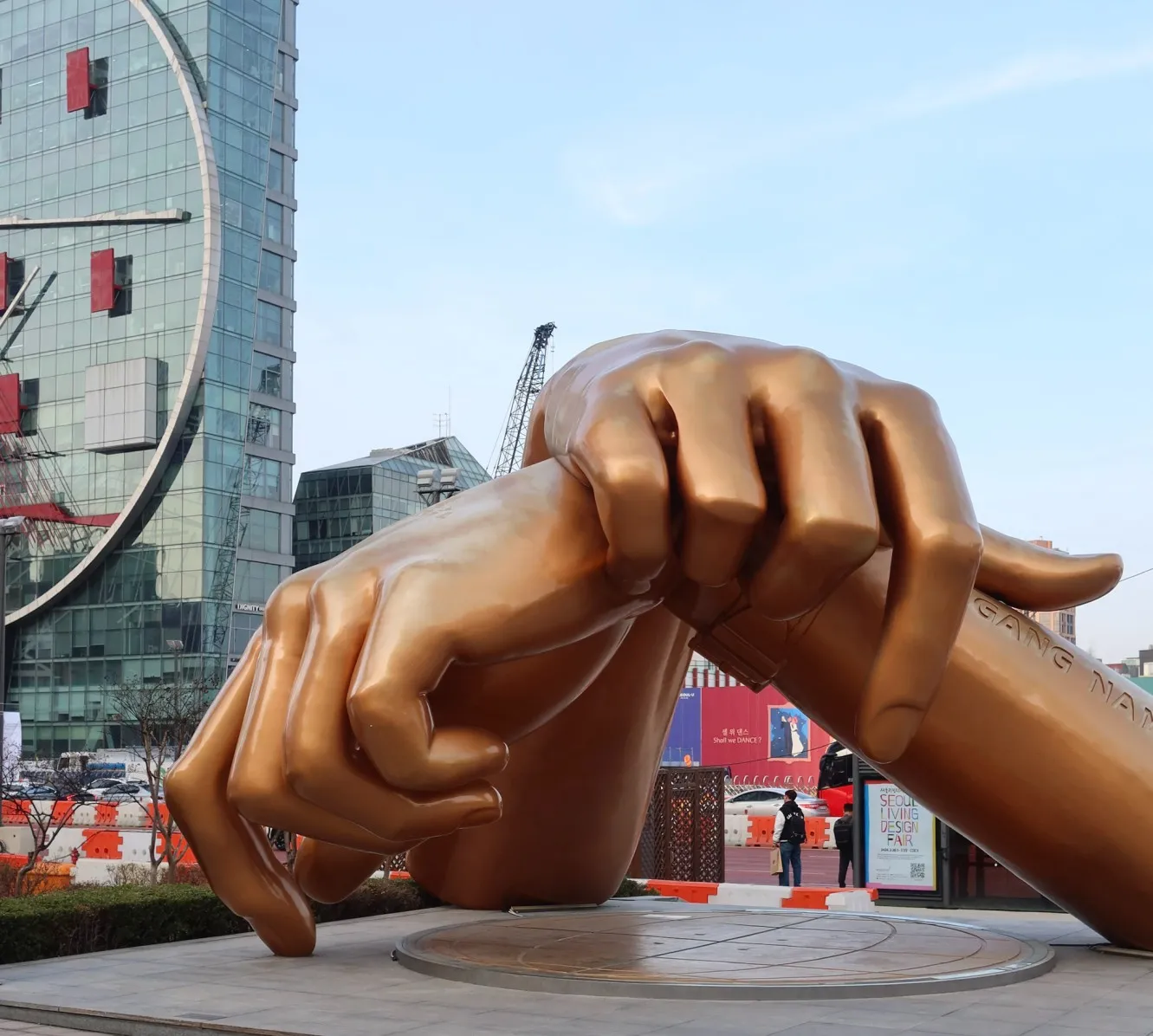
“Oppa Gangnam Style”… I challenge you to not get that jingle stuck in your head visiting this attraction.
If you are like me, Gangnam was brought to your attention from Psy’s 2011 hit, Gangnam Style. His song is an ode to the trendy and hip culture of Gangnam. The area of Gangnam is modern, and glamorous with towering skyscrapers and a feisty nightlife scene.
Located beside the COEX mall is a statue dedicated to this song that catapulted Gangnam to an international audience. Make sure to snap a photo in front of it doing the classic Gangnam hands for the ultimate throwback!
12. Bongeunsa Temple
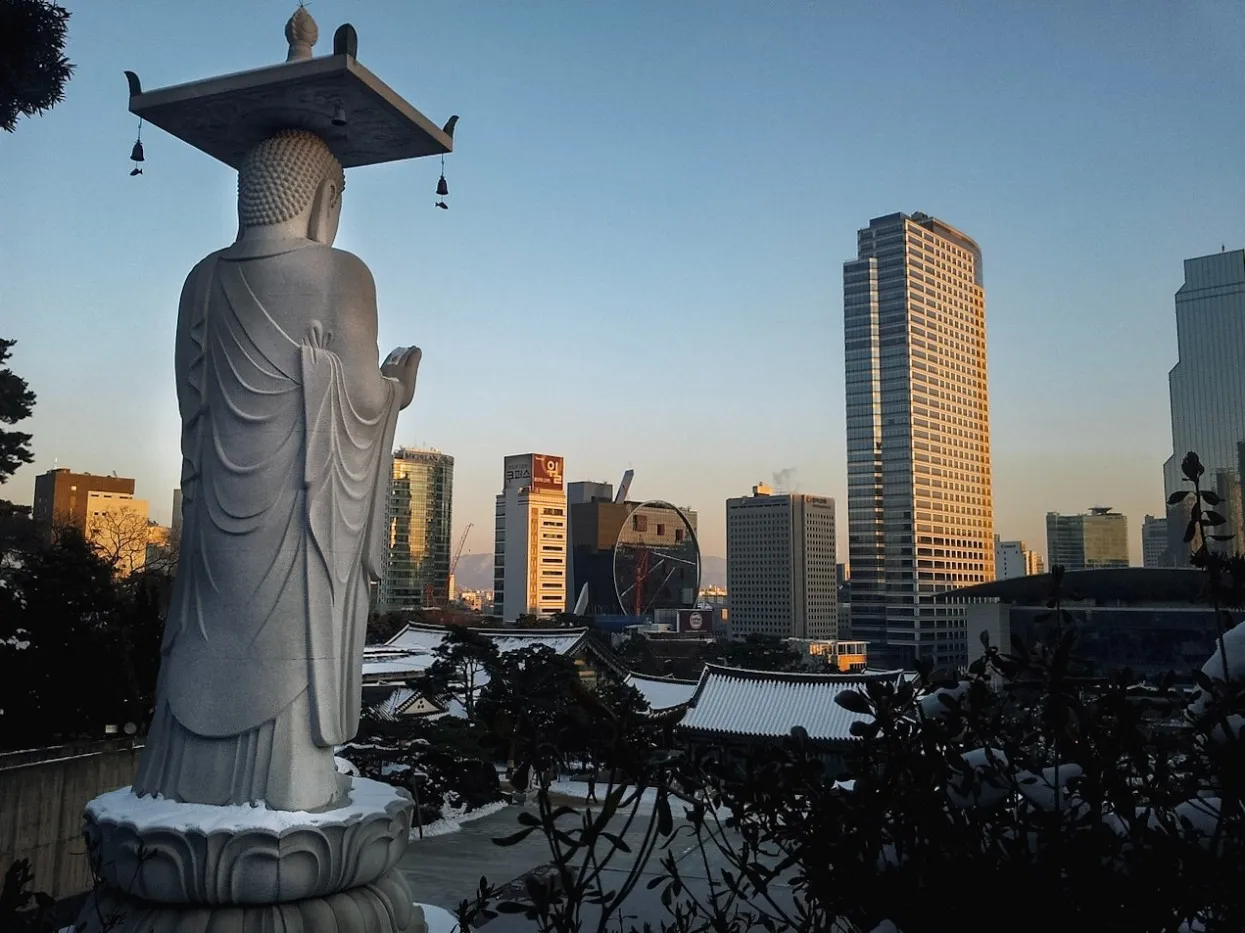
Bongeunsa Temple is one of the oldest temples in Seoul dating back to 794. Located opposite the COEX mall amidst the skyscrapers and trendy bars, the temple manages to maintain a peaceful energy for some quiet reflection. The grounds are serene with the temple surrounded by trees and a few walking paths to explore.
There is also a large 23-metre (75-foot) Buddha statue which makes an incredible photo with the skyscrapers of Gangnam as the backdrop, offering an old v new contrast.
13. Gangnam Streets
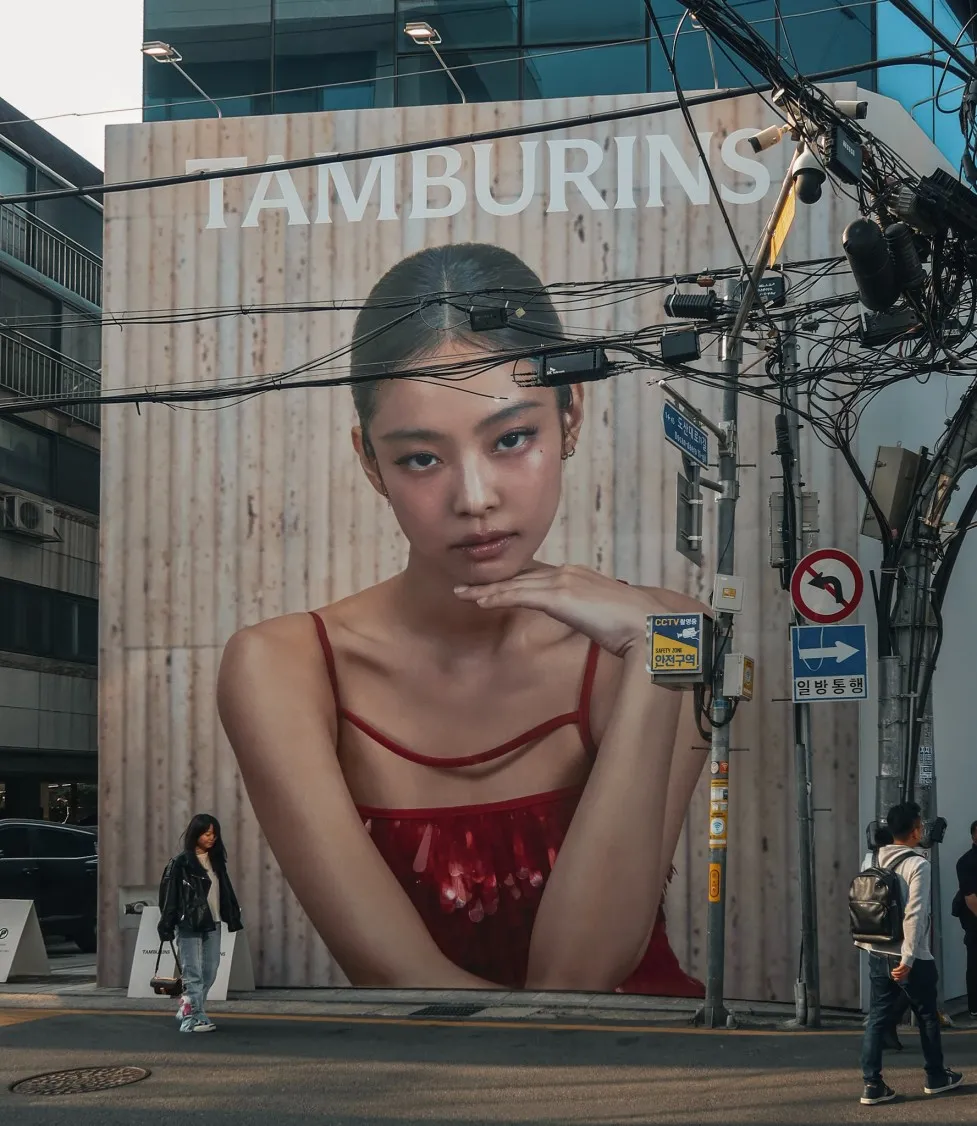
Don’t just go to COEX and tick Gangnam off your list, there is much more to see and do in this part of Seoul. If you are looking for something a little boujee then head to Garosu-gil & Apgujeong for some upmarket shopping and high end dining.
Garosu-gil Street
This is an upscale and fashionable tree-lined street with mostly high-end boutiques and trendy restaurants.
If you are a BTS fan you might want to head to Yoojung Sikdang, the BTS cafe. The boyband used to visit here during their early days as trainee idols. The walls are covered in posters of the band.
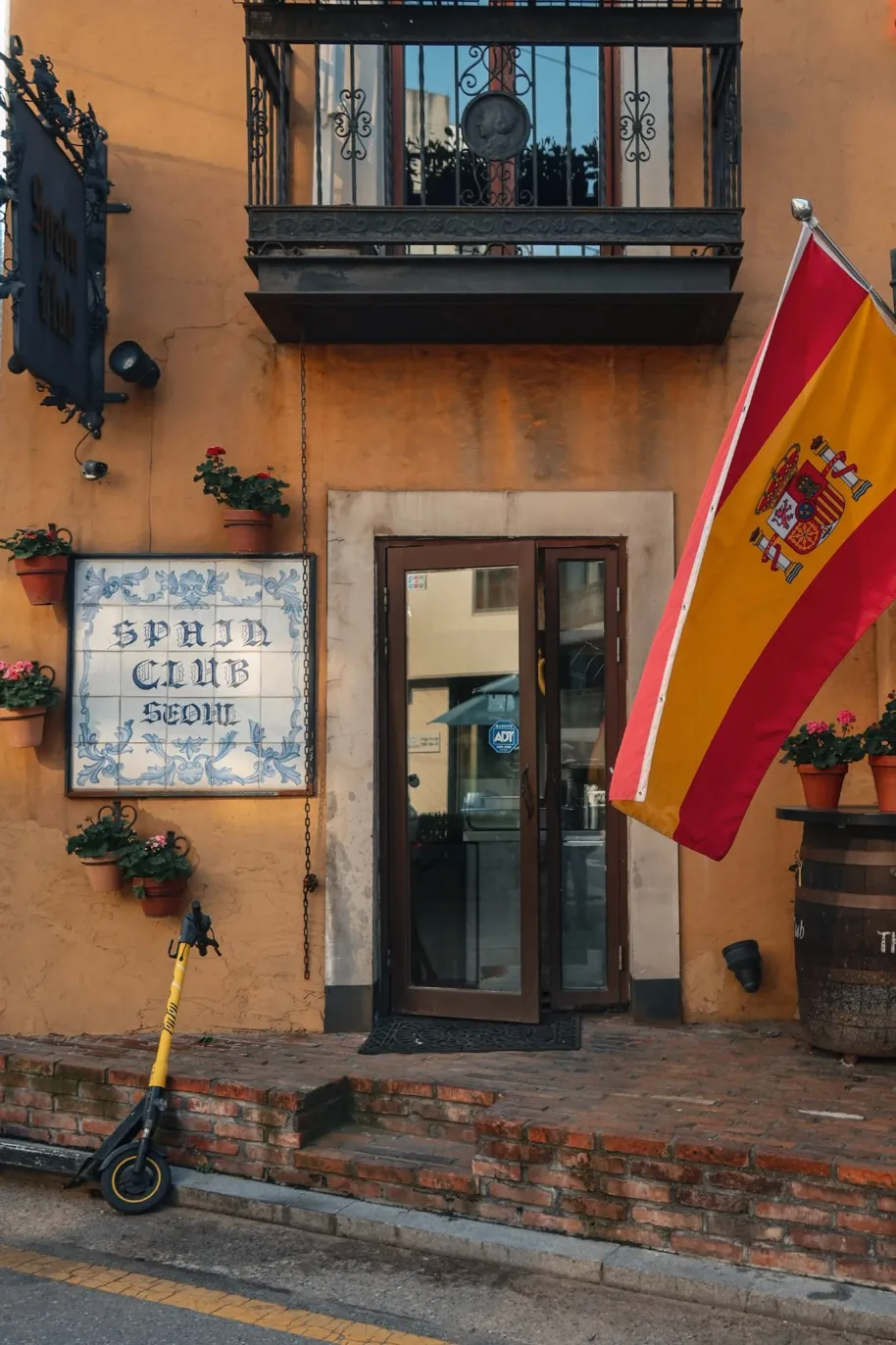
Apgujeong Rodeo
Another upscale area with mainly flagship designer shops. Close by is K-Star Road with bears representing K-Pop idols.
14. DIY At Art Monster
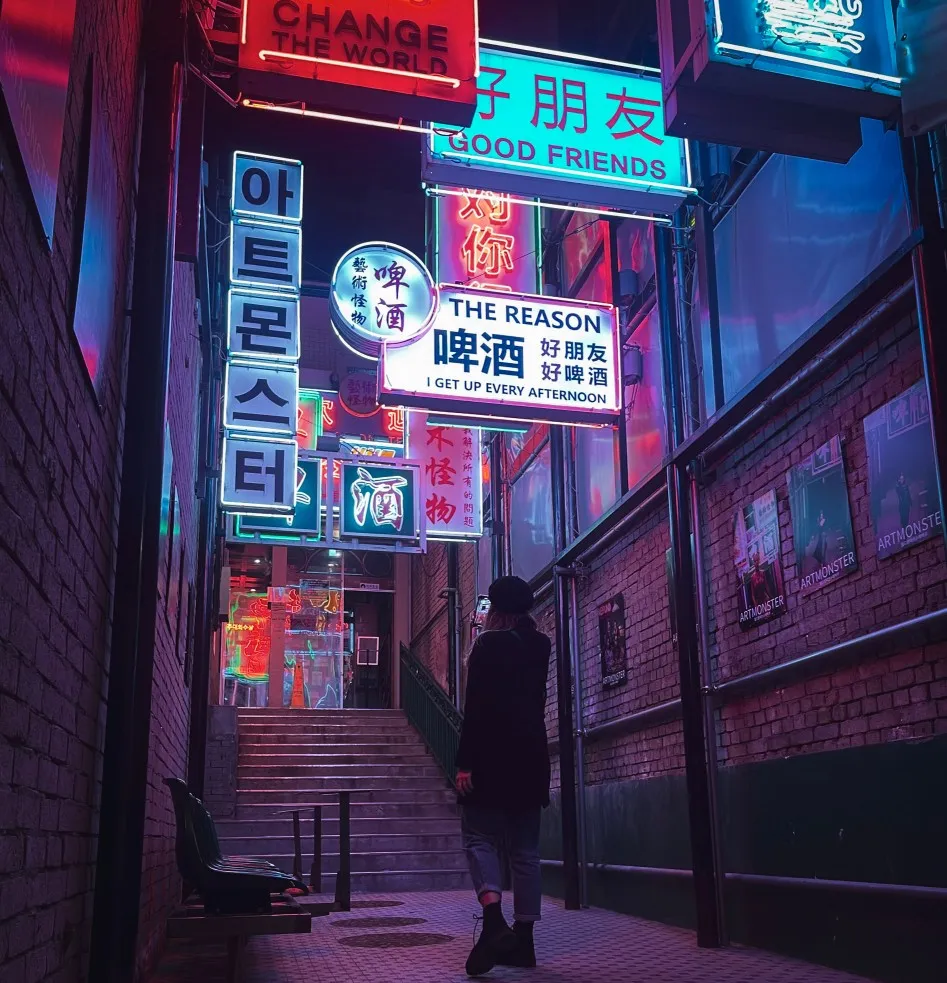
Another Ganagnam haunt, beer lovers must add this to their Seoul itinerary. Although I don’t really enjoy beer, Art Monster ended up being my favourite bar in the city.
This bar is self-serve, you get a bracelet when you enter and use that to pour at each beer tap. You can pour as much or as little as you would like which makes it the perfect place for beer tasting. For non-beer drinkers, the sour blueberry flavour is delicious, it tastes more like a cider than a beer.
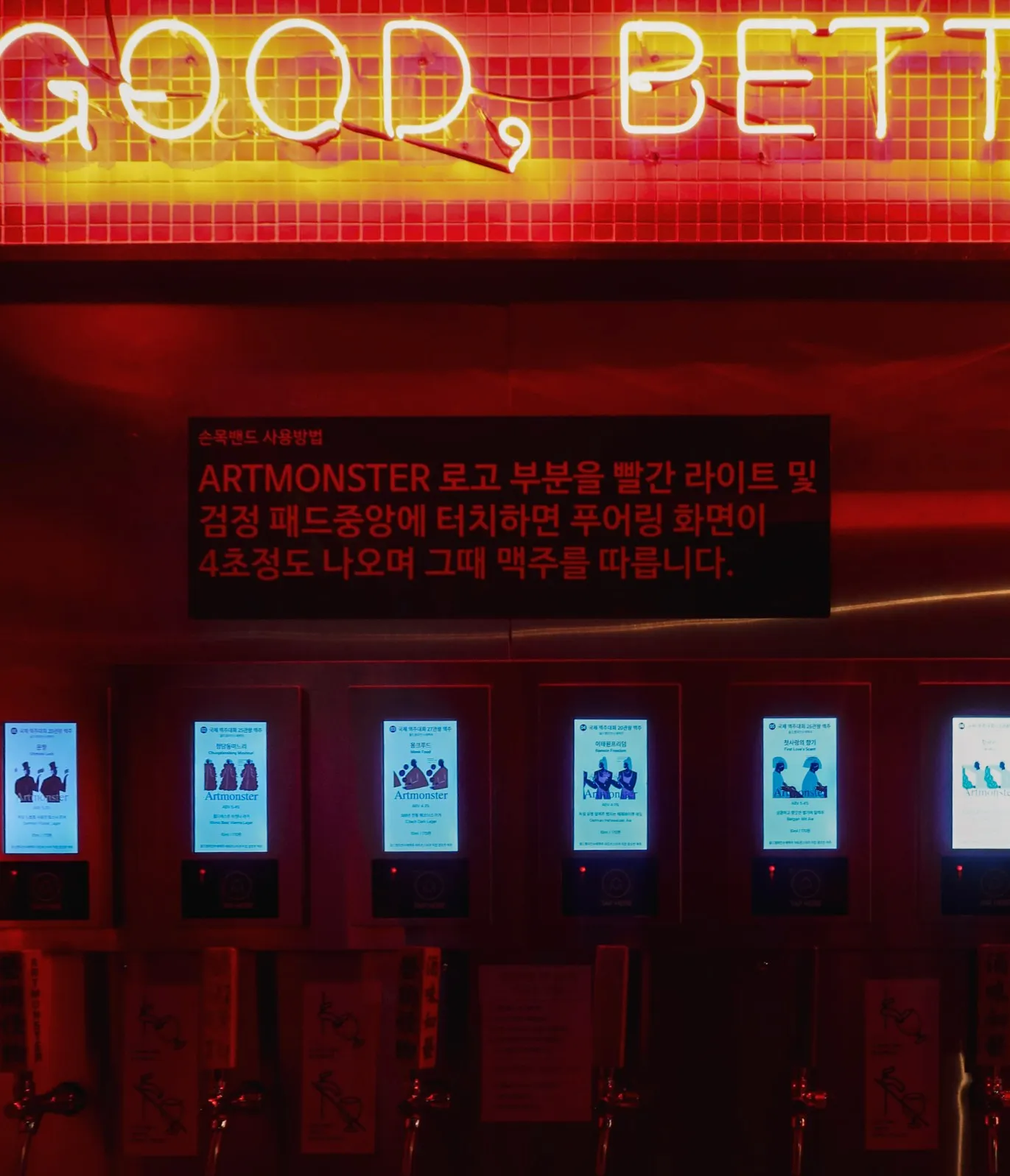
There are two other Art Monsters in Seoul, each has a different theme. The branch in Gangnam has a super cool design, it is based on nights in Hong Kong. The entrance is dramatic with bright neon signs which area a fun backdrop for photos. I have never been to a bar with such a cool exterior, these guys really brought Hong Kong to Seoul.
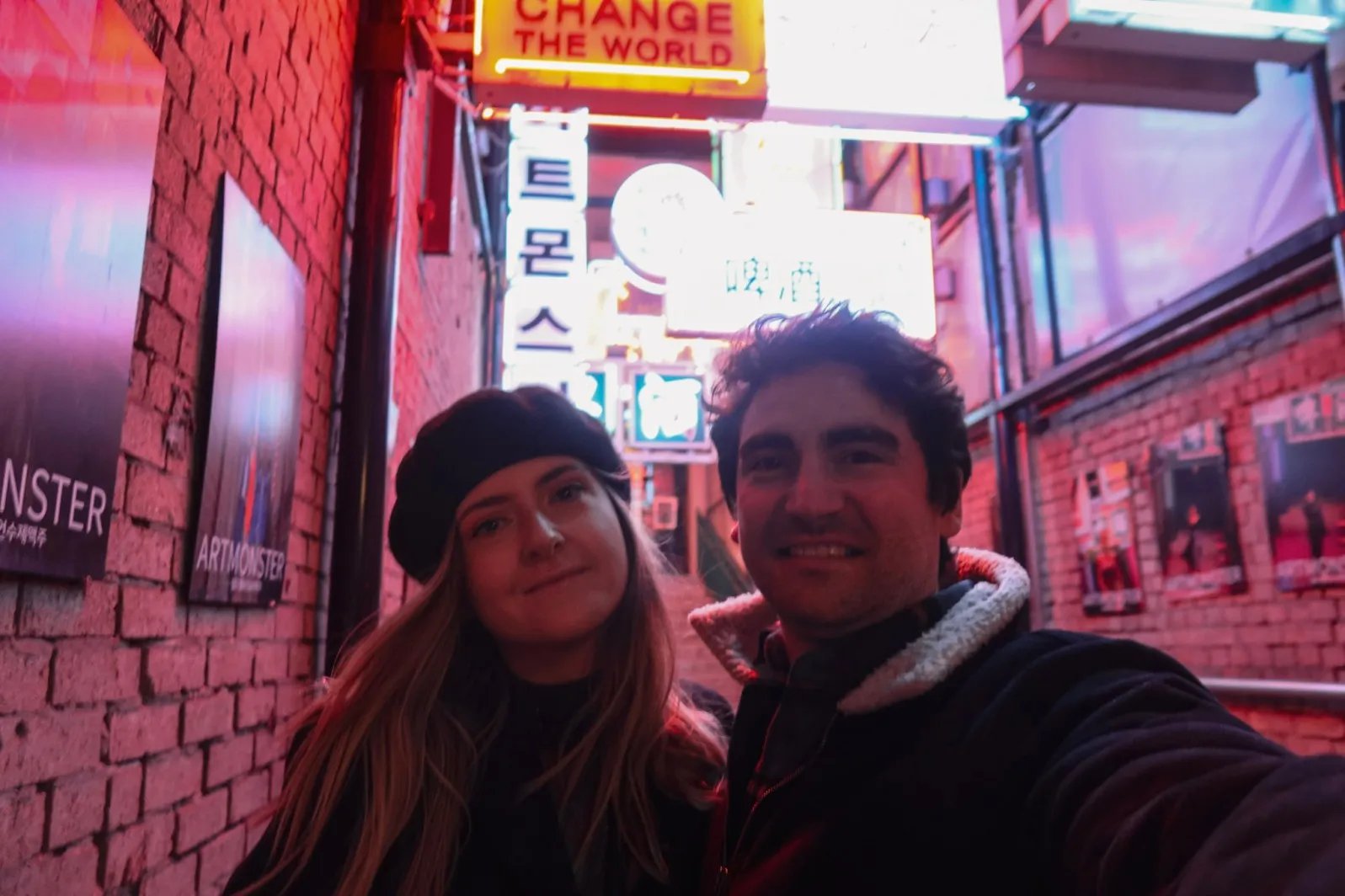
15. Bar Crawl In Itaewon
Known as the expat area of Seoul, Itaewon is a vibrant and diverse district that you must visit in Seoul. It is generally an affordable area making it attractive for international workers to stay. The international influence is evident just a few minutes after stepping out of the subway station, the streets have many kebab shops and Western restaurants, and the manhole covers even have countries from around the world engraved on them.
Itaewon is most famed for its wild nightlife, although the area is not AS busy as before the Halloween tragedy of 2021 it is still a lively spot for a memorable night. Popular bars are the multi level Fountain and the tiki bar MAHALO. I also have to shout out to the Craic House, a welcoming, energetic and cosy Irish bar with delicious shepherd’s pie, it was just what we needed after 4 months away from home.
Make new friends while experiencing Itaewon’s wild side, this pub crawl happens every Friday in Itaewon (also on Saturday & Sunday in Hongdae). Visit 4+ bars/clubs.
16. Spend A Day In Itaewon
Although best at night, here are some places to visit in Itaewon during the day:
Antique Shopping Street
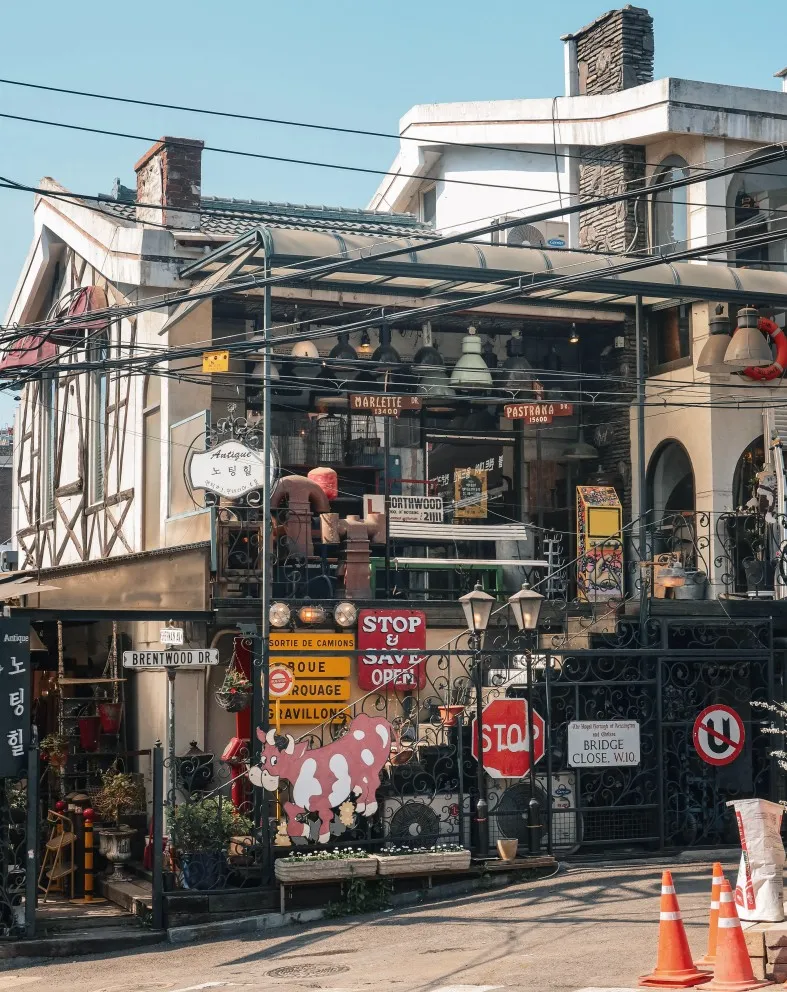
A walk down antique shopping street is certainly interesting, all the shops on this street primarily sell antique furniture but you’ll also find a limited selection of art, toys and accessories. Due to Itawons diversity, you’ll notice a mix of Asian and Western styles. The vibe is laidback, you are mostly left alone to browse, and if you see something you like haggling is accepted. Unless you are looking to purchase something you won’t spend long here but it is fun to check out.
108 Heaven Stairway
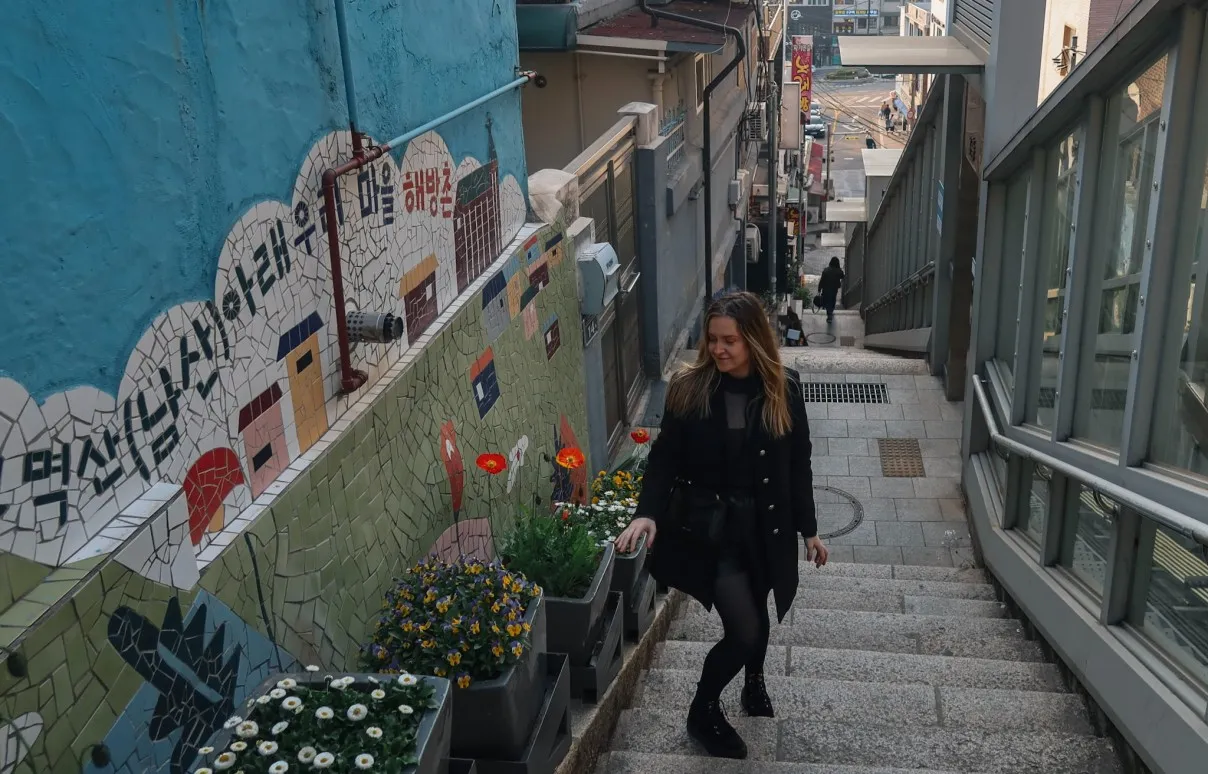
Built in 1945 during the Japanese invasion as a path to a Shinto shrine honouring dead Japanese soldiers. The Japanese forced Koreans to attend the daily shinto rituals, using the stairs as access to the temple. Once the war was over the shrine and other Japanese infrastructure were destroyed, all that was left behind was the stairs.
Today, the stairs are used by locals and as a tourist spot. A funicular has been installed to help anyone reach the top.
Yongsan Haebangchon Village
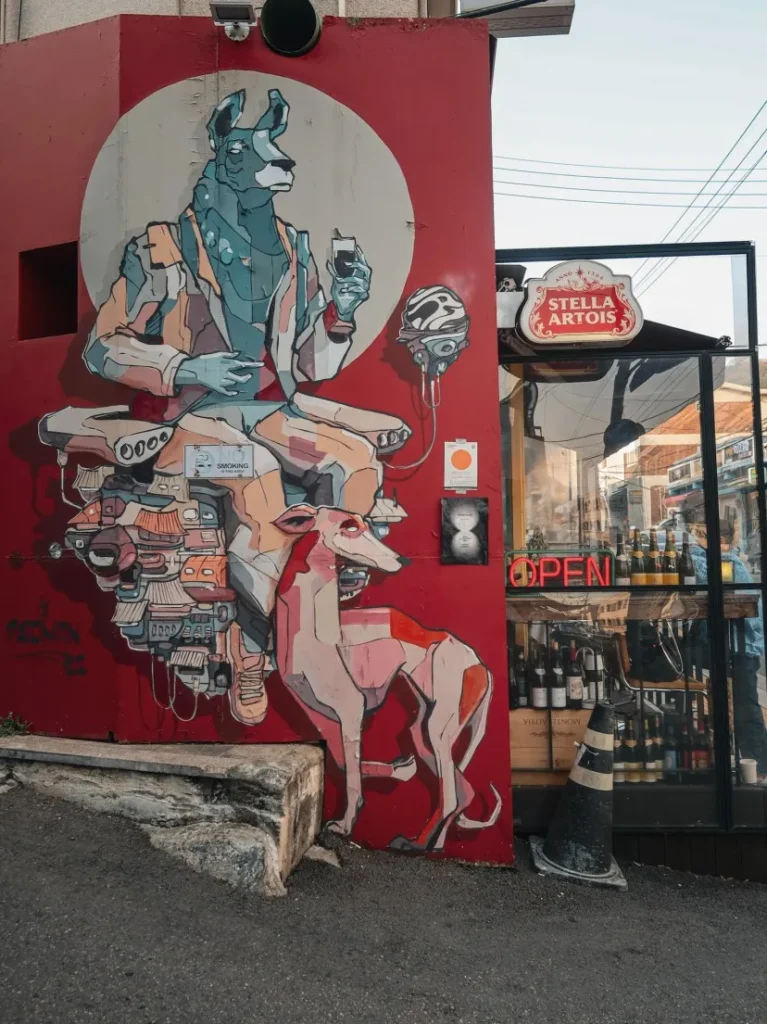
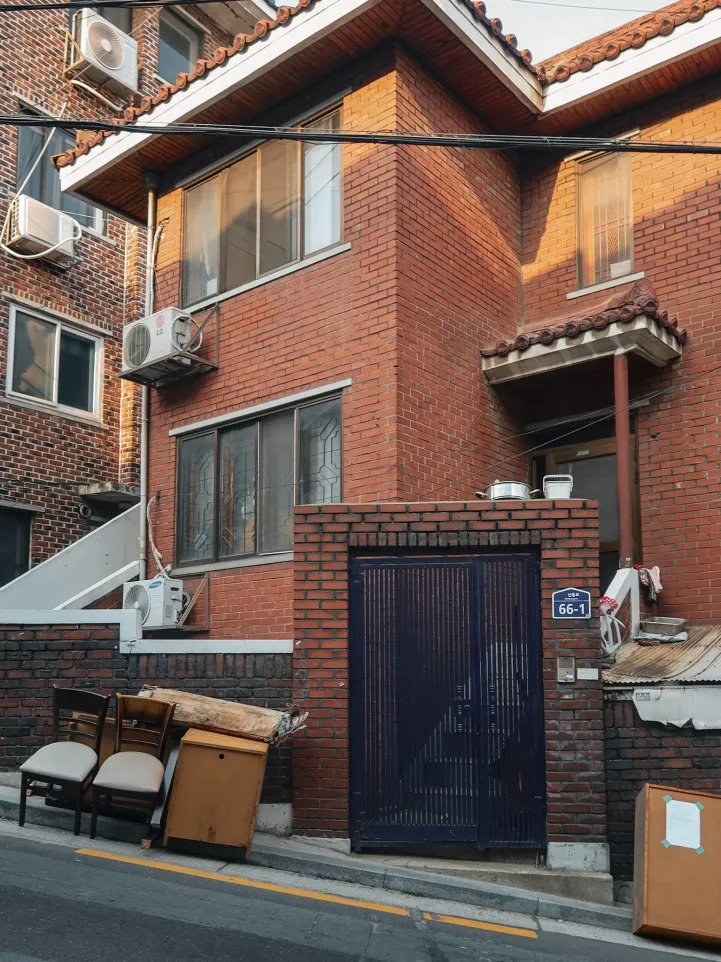
Translated to “Liberation Village“, a nod to the end of the Japanese invasion, many locals returning from the war and citizens from the north resided here.
The best thing to do here is to wander the alleyways and find not only traditional but renovated hanoks, independent boutiques and rooftop cafes. It is very steep so wear comfortable shoes.
Seoul Central Mosque
This is the first mosque in South Korea, it is very large and has a Turkish-style exterior of blue tiles. Non-muslims are allowed to enter but photographs should be restricted to not disrupt prayers.
17. Gangchon Railway Park
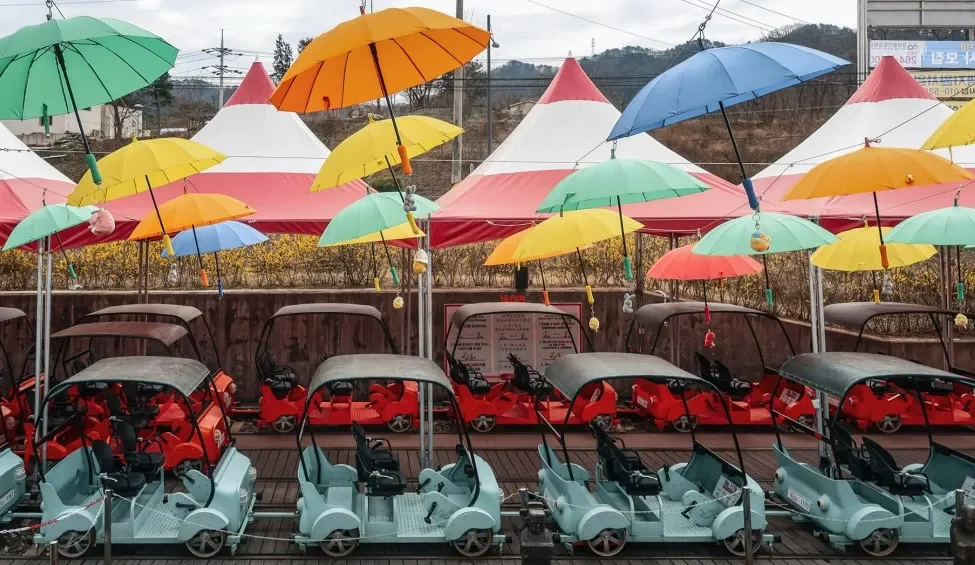
Looking for something different to do for half a day? Gangchon Railway Park is a fun half day trip outside of Seoul city centre. Feel like you are in your own K-Drama by pedalling along an old railway on a pedal vehicle with the beautiful Korean countryside in the background.
The course passes through fields, a lake and 4 tunnels. The tunnels each have a theme with music and lights, it is very immersive. At the end, you will take the appropriately named “romantic train” along the stunning Bukhan River.
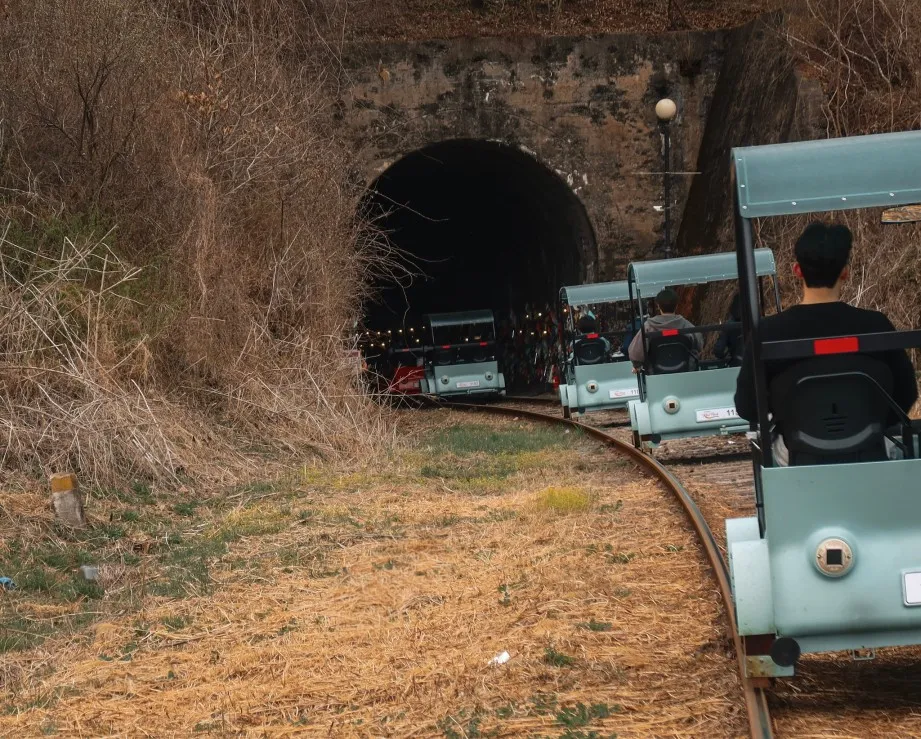
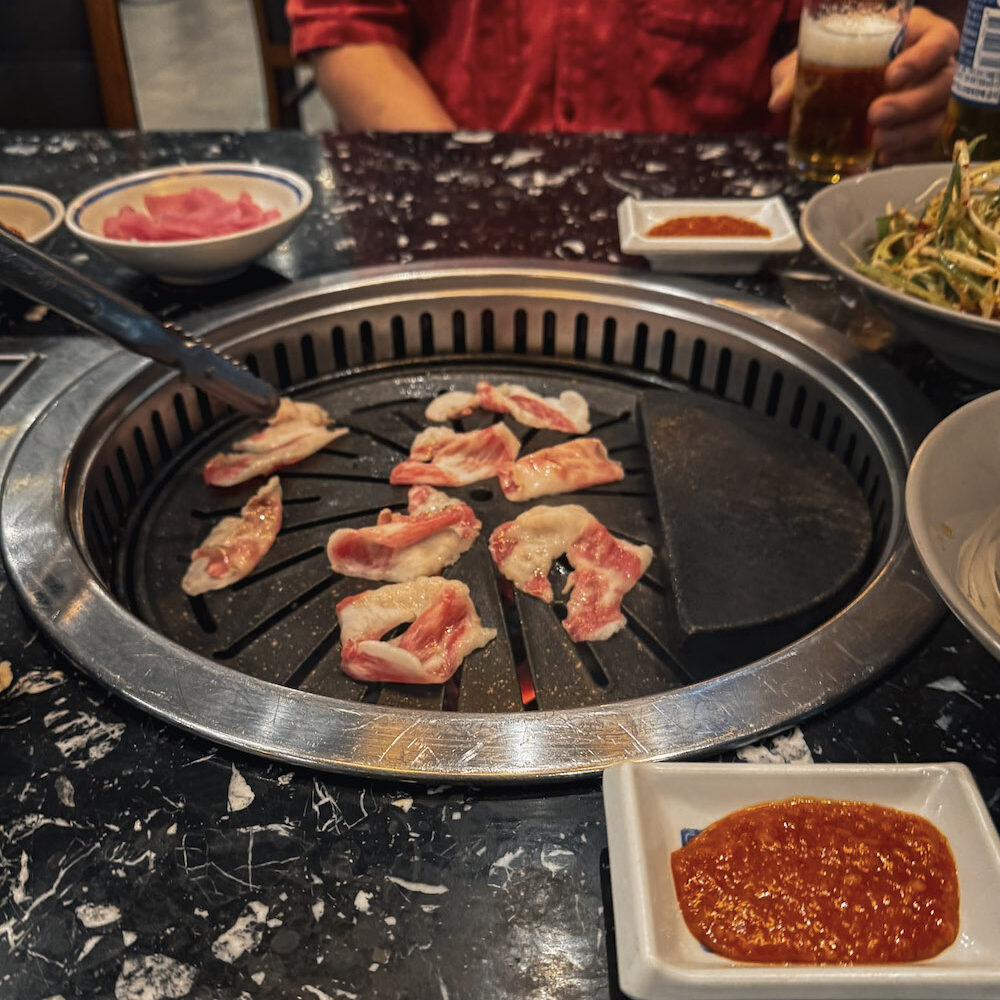
Although you need to pedal, most of the track is slightly downhill so it requires little effort, it is the most relaxing cycle I have ever been on. The bikes come in two sizes; 2 seater or 4 seater. This is a popular attraction in Seoul, it’s best to book in advance to secure a slot.
It takes about 2 hours on the train to reach this park, but it is a scenic ride passing Nami Island so the time goes by fast.I wrote a full blog post on my experience at Gangchon Park here.
This full day tour not only takes your to Gangchon Rail Park but also Nami Island and Petite France.
18. Baseball Game at Jamsil Stadium
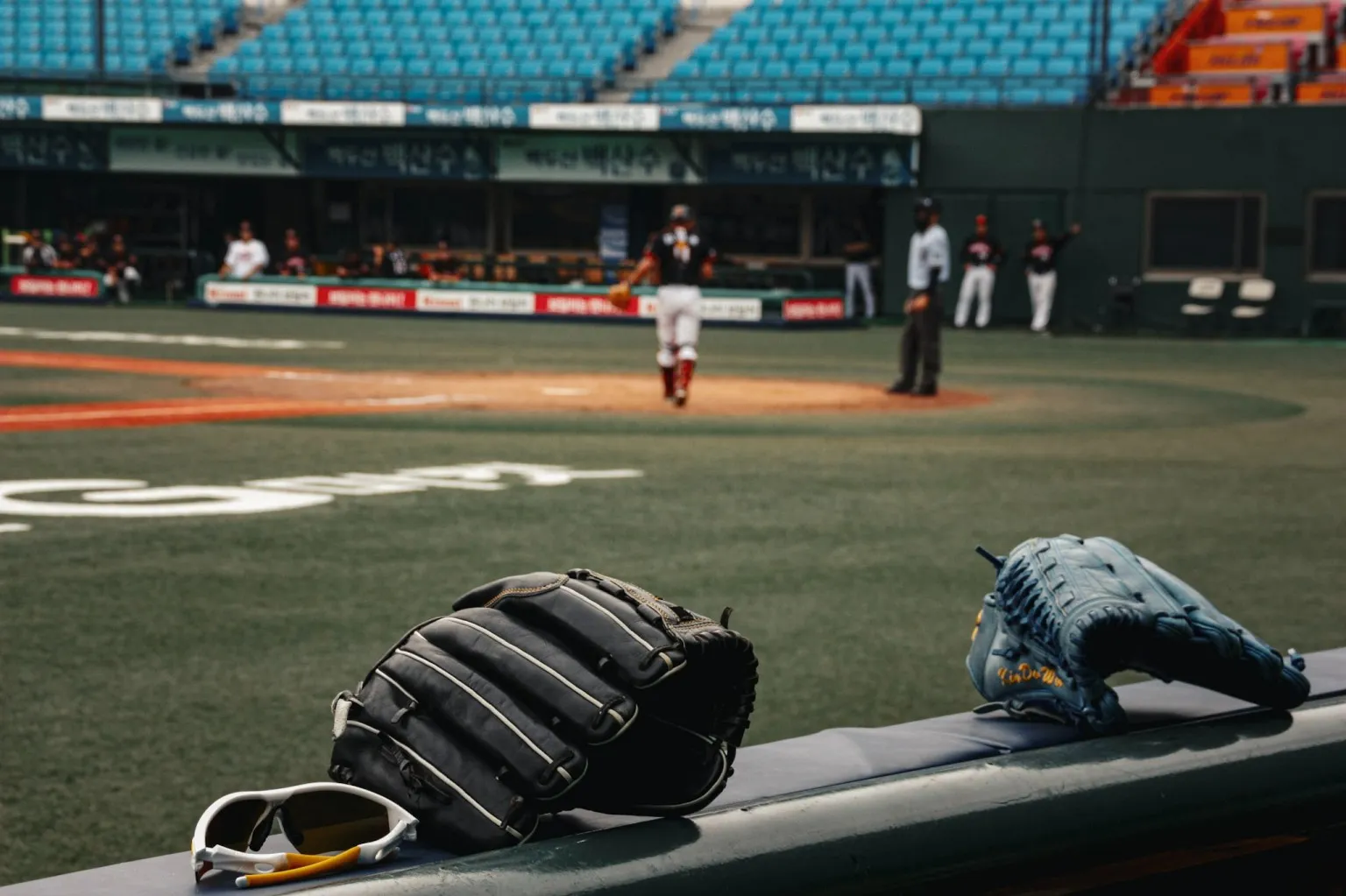
Watching a game of baseball at Jamsil stadium is an incredible experience, even if you are not into sports, it’s one of the most fun things to do in Seoul.
Baseball is the most popular spot in Korea, they have their own league with 10 teams called the Korean Baseball Organisation (KBO). One of the best places to see this sport in action is Jasil Stadium, Korea’s largest stadium and home to two of Korea’s biggest teams, the Doosan Bears and LG twins.
The atmosphere is wild, I encourage you to get seats in the cheering zone to experience the crowd chants, the energy is like nothing else I have ever experienced. You will likely have no idea what’s going on but it is so much fun to be in the centre of it. The stadium sells alcohol and snacks too.
Purchasing tickets online is not possible if you do not have a Korean credit card, but you can buy tickets at the stadium 1-2 hours before the game starts. Another option is to ask your AirBNB host or hotel reception to purchase tickets for you online a few days in advance.
19. Insadong Culture Street
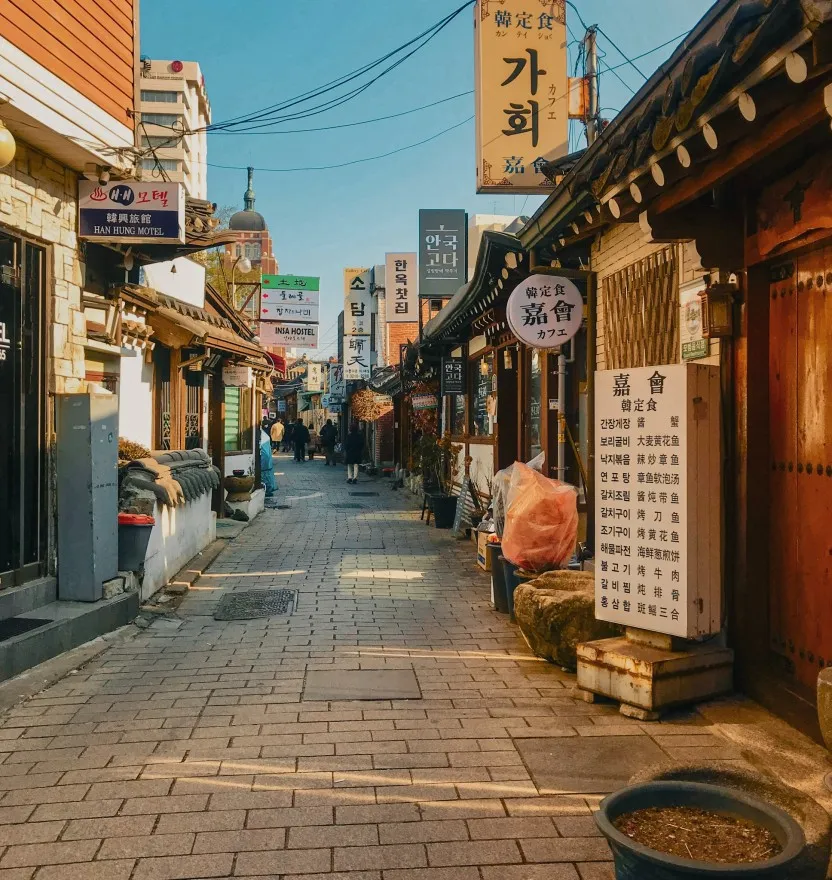
Insadong is a neighbourhood known for its arts and culture. The streets have galleries, tea houses, craft shops and small shops selling traditional Korean goods. It is a peaceful area, much quieter than the nearby Myeongdong, with a more slow-paced traditional vibe. Many of the cafes here are designed to look like. traditional hanok.
Some things you should not miss in Insadong:
- Ssamziegil – mall with a quirky design, it is full of artisan boutiques
- Ddong Café – poop themed cafe, silly and oddly delicious
- Visit a traditional teahouse such as Dalsaeneun Dalman Saenggak Handa or Namusae Tea house
20. Chicken + Beer Street

Chimac, fried chicken and beer, a combination direct from heaven.
It is easy to get your chimac fix in Seoul, but one place is ALL about the chimac, that’s chicken and beer street, no its not something from a man’s dream, it’s real! In Myeongdong dreams become a reality! Not quite a full street, more like a complex of 5 – 6 chicken restaurants that spill out onto the road creating a lively atmosphere.
BHC is hands down the best, I love the red hot cheese flavour, Daily Beer is also very nice.
21. Bukhansan National Park
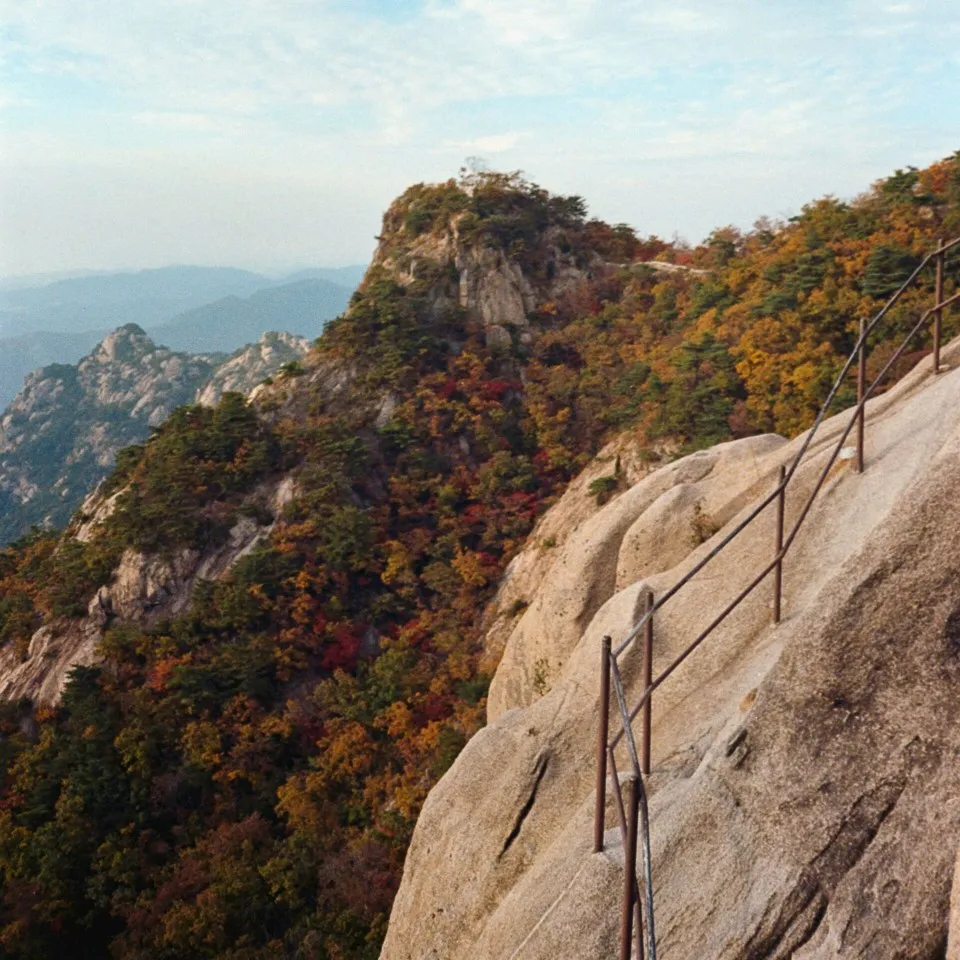
You need to add Bukhansan National Park to your list of coolest things to do in Seoul! It is considered one of the world’s most popular parks with an estimated 5 million visitors each year.
Bukhansan National Park is actually home to two mountains, Bukhansan and Dobongsan. The highest peak is Baegundae Peak at 836 metres and the second peak Dobongsan is 740 metres (2,428 feet).
The most popular trail is the Bukhansanseong Course which takes you to the Baegundae Peak where you’ll have incredible views of the Seoul skyline, it will leave you speechless.
The trail is roughly 7 kilometres (4.2 miles), and has a gradual incline with a well-marked trail making it suitable for most fitness levels. But, that doesn’t mean it’s easy, picture large narrow rocks with just a rope to hang onto, it’s exciting and at times a little bit scary. It can take 4 – 6 hours to complete so don’t forget to bring some gimbap with you.
The mountain is very busy and safe to hike alone, but if you would prefer a guide you can find one here.
The easiest way to get here is to take the metro to Gupabal Station (Exit 1) and then transfer to Bus 704, 34, or 8772, 20 – 30 minutes to the parks entrance: Bukhansanseong Fortress.
22. Photobooths
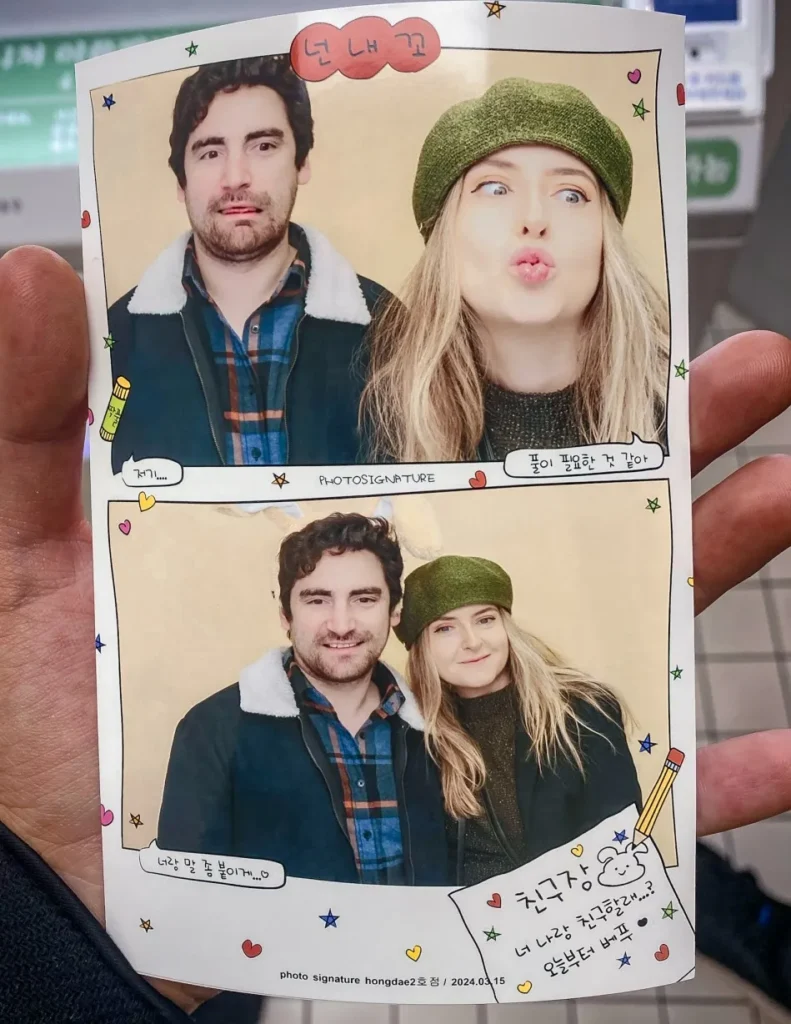
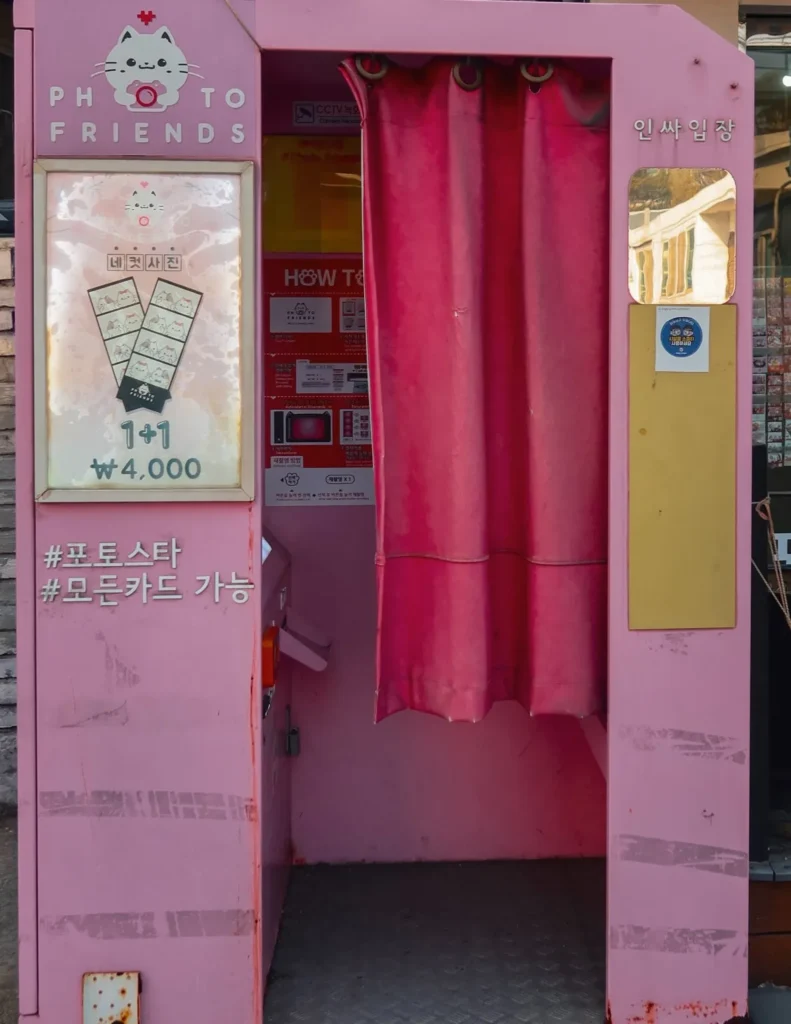
I am obsessed with the photobooth culture in Korea, it is so much fun and you get a lifelong souvenir to remember it by. I found it difficult walking by one and not going in.
The photobooths have different themes like this train one BYTP Station and props such as sun glasses, hats, and costumes. There is at least one on almost every street so pick a few at random for an unforgettable experience.
The photos come out as high-quality polaroids, usually 4 different photos but you can typically change this and you can receive a digital print. You can choose a filter but I found the “no filter” option smoothed my skin. Some photobooth allow you to alter your eyes, lips and nose, similar to facetune.
23. Korean BBQ
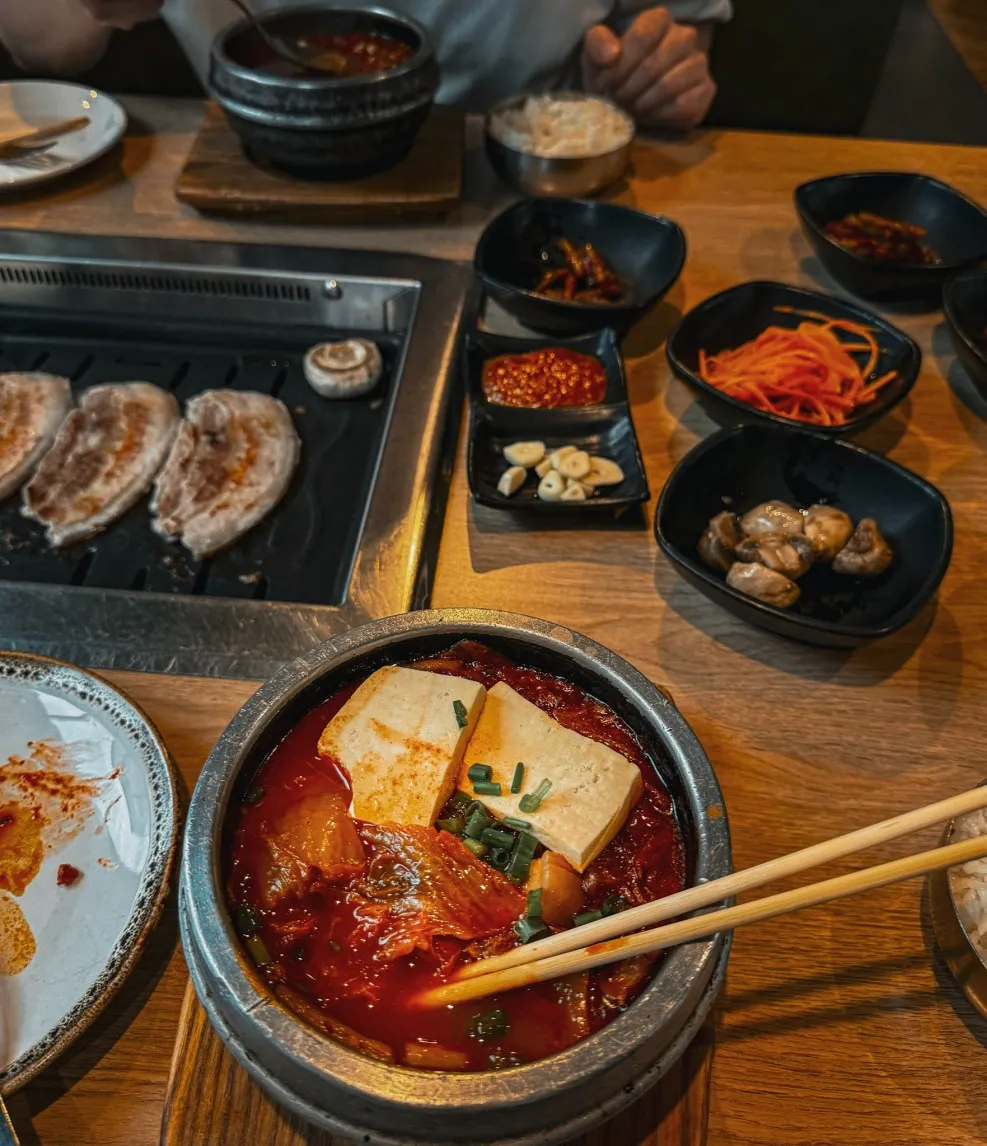
All of this is for me? What do I do? Do I grab those leaves? Can I turn the meat? These are some of the many questions I had during my first Korean Barbeque. At first, it might seem intimidating as it is a totally different dining experience but it is straightforward and highly enjoyable. Visiting a Korean Barbeque although delicious is not just about the food, it gives travellers an insight into the communal dining culture in Korea.
You will be seated at a table with a built-in grill, you choose your meats, once the waiter takes your order they will bring you down a variety of side dishes called banchan that will be placed in the middle of the table to share. Banchan is different in each restaurant so you never know what you are going to get, usually it is 5 – 7 dishes of kimchi, japchae, namul, and dubu jori. Each dish is distinct and compliments the meats, you can typically ask for a refill. Condiments like pepper, gochujang and oil will also be placed on your table.
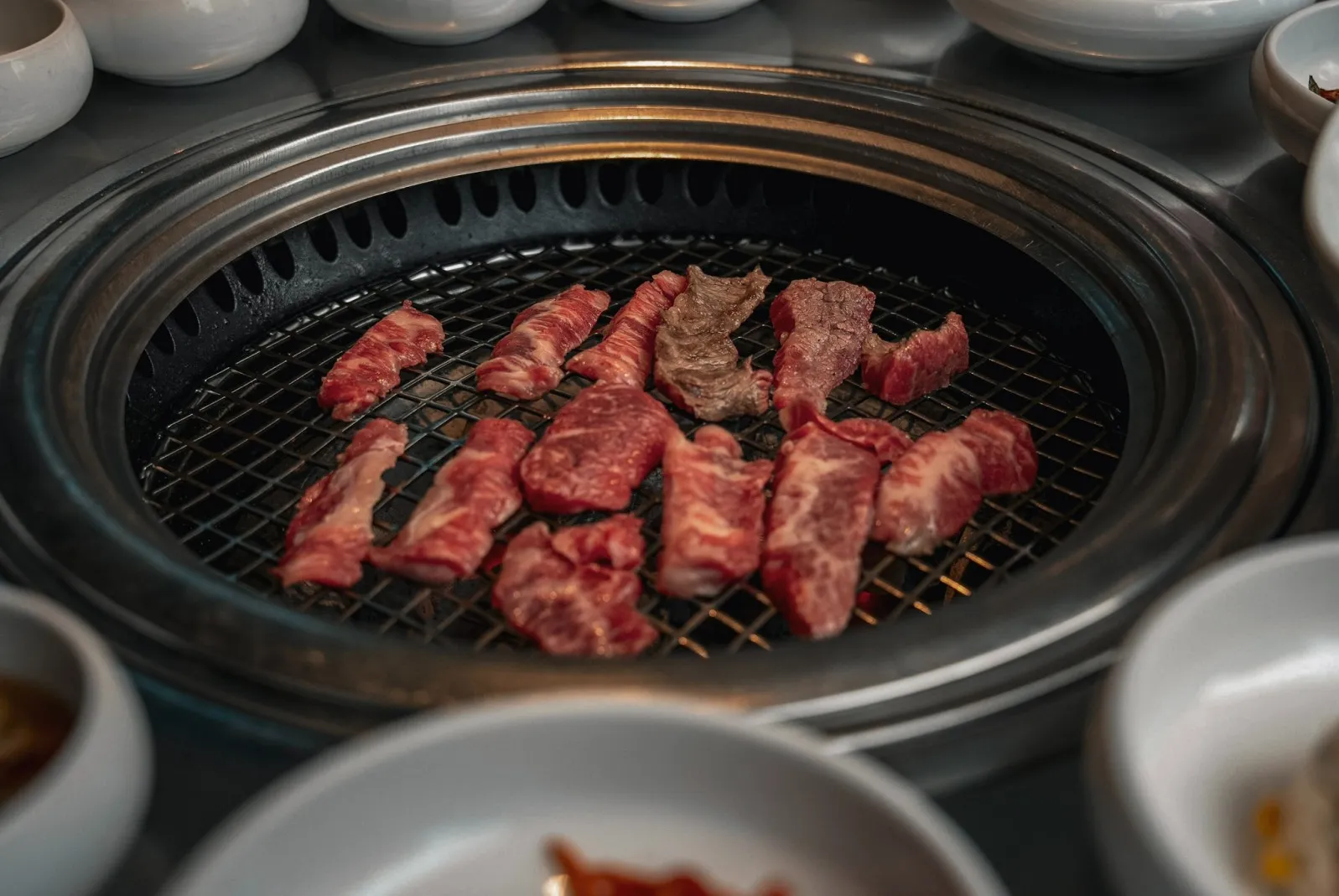
Then the meat comes, some places will grill the meat for you at your table, and other places will leave it up to you. We generally let the waiter start the process and then take over ourselves. When the meat is cooked you assemble an assam with the leaves you should have been given (if not, there will be a counter where you can take it yourself). An Assam is a piece of meat wrapped in a perilla leaf with vegetables and sauce, it’s so delicious!
Without a doubt, a trip to a Korean barbecue is a must for your first time in Seoul.
Don’t know where to go? Pig Company and ungteori saenggogi in Hongdae, ZIU in Myeongdong and JD BBQ in Itaewon are all fab!
Want to try somethings different? Visit this locals favourite K-BBQ of the month with a small group of fellow travellers. The restaurant changes every month.
24. Gwangjang Market
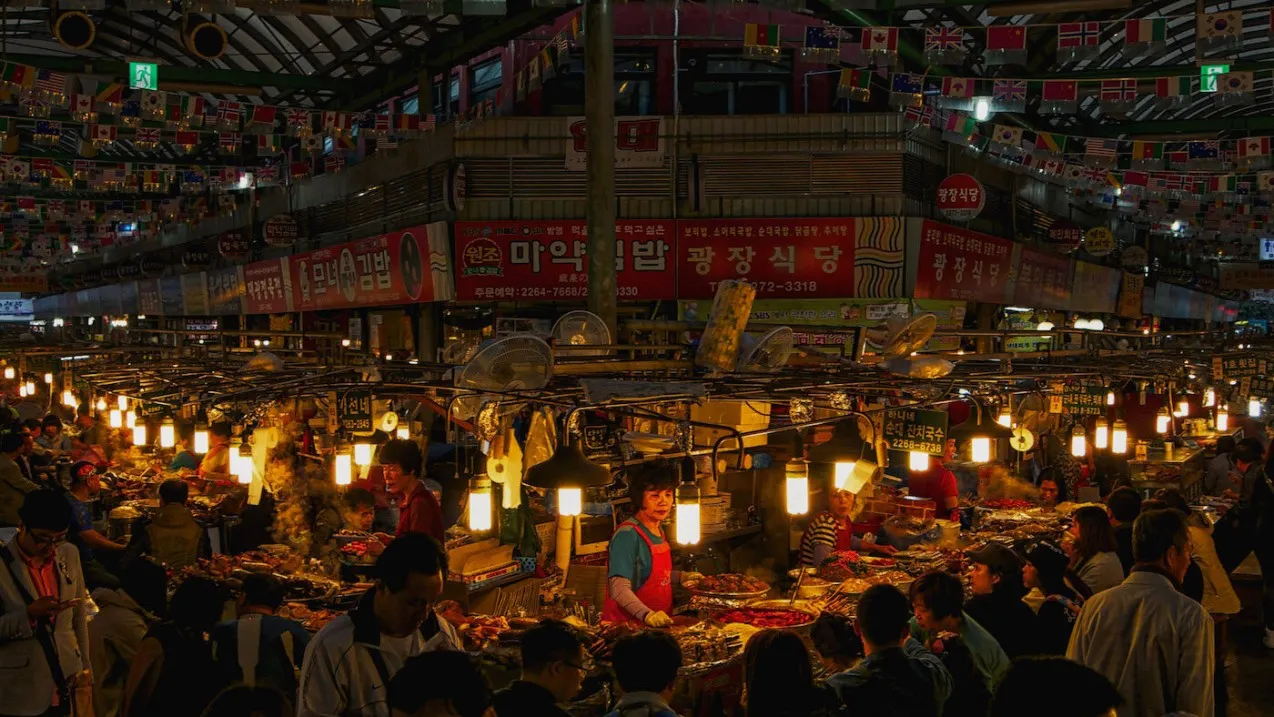
Another must not miss foodie experience in Seoul. Gwangjang Market is a traditional Korean market, selling textiles, clothing, fruit, eg and most importantly an awesome food market.
If you only have time to go to one food market in Seoul I recommend Gwangjang Market to all first-timers.
This market is full of zesty vendors cooking up a storm, you won’t have trouble finding a place to eat, but you’ll have trouble deciding what, there is just so much on offer! Although it is a touristy place it still draws in the locals giving it an authentic feel. The stalls typically sell the same meals so I wouldn’t fret on where to sit.
Foods to eat include hand-pulled noodles, crispy mung bean pancakes, kimchi, and tteokbokki.
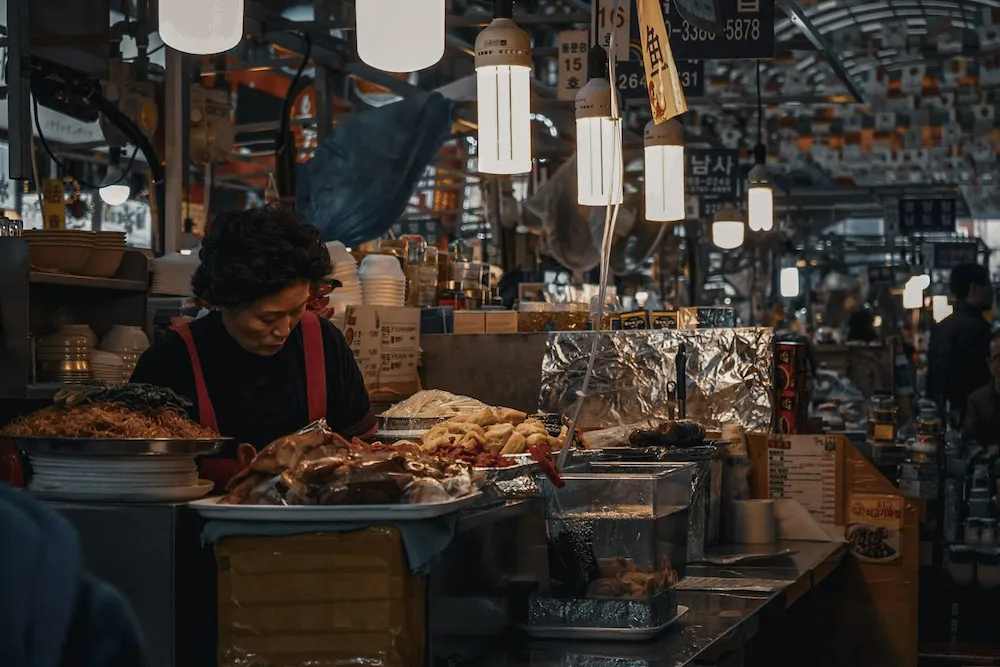
25. Seoul Cheonggyecheon Ruins
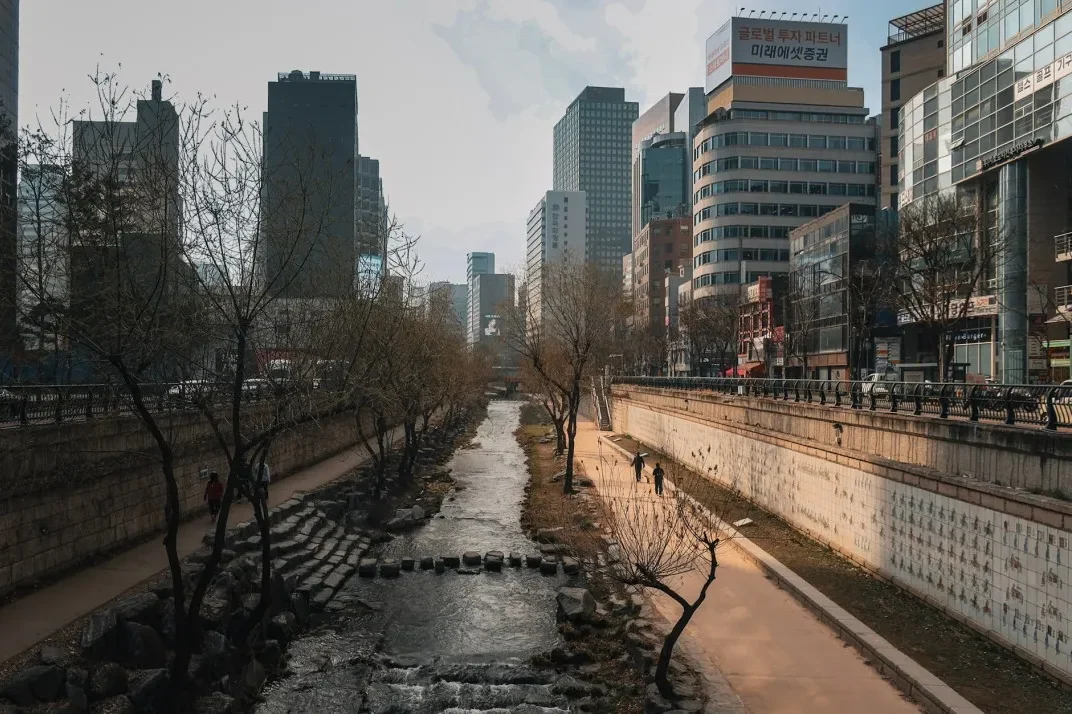
Covered with concrete and made into the Cheonggye Expressway in the 20th Century, this almost wasn’t part of the city. Thankfully in the later 80’s the Seoul government restored this area to a scenic and peaceful man-made stream.
The total length is 11 kilometres (6.8 miles) of walking and cycling paths alongside a quiet stream that is surrounded by Seoul’s skyline. It is a unique city walk that is sometimes surreal, so quiet and relaxing with trees and wildlife but look up and you see skyscrapers. That is what I adore about Seoul, so many pockets of nature, free to visit but well maintained.
In addition to a peaceful walk, it is also a photographer’s dream, the sunset here is so pretty.
pro tip: order some tasty tacos to go from Oldies Tacos, a few metres away, eat them along the stream. This place is so good!
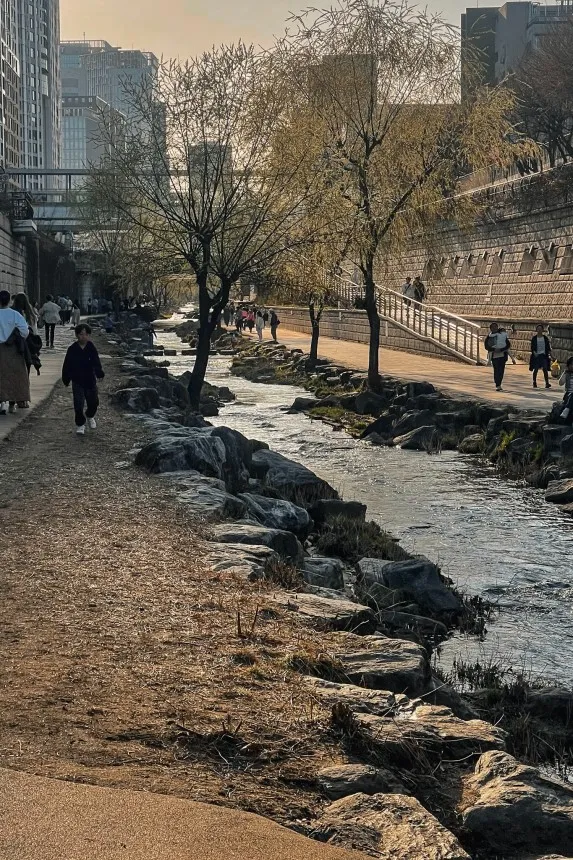
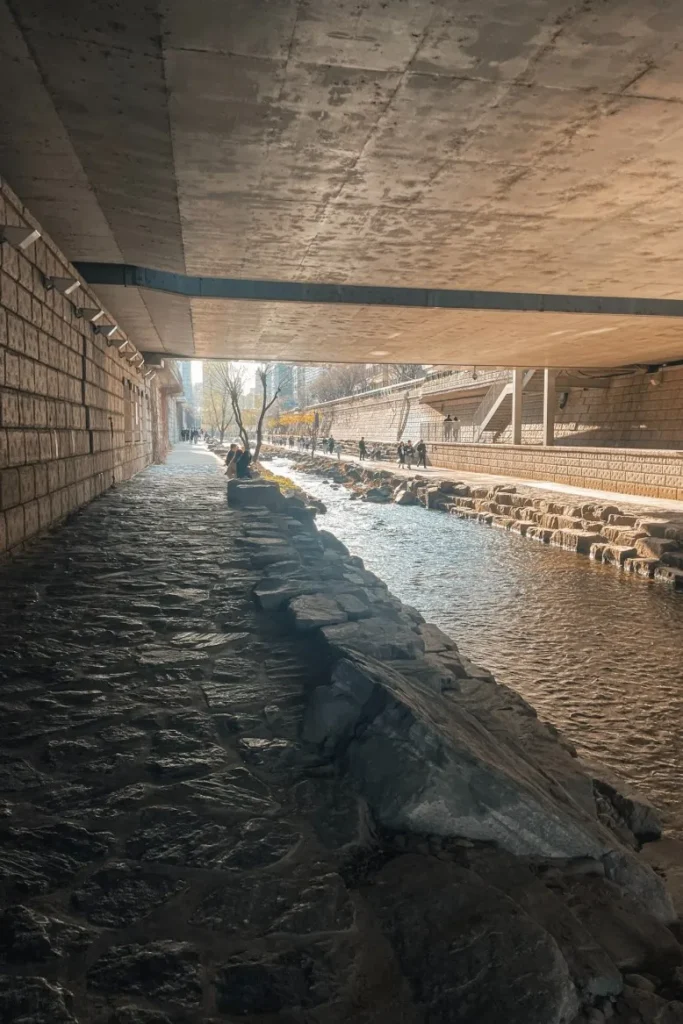
26. Drinks On Euljiro Nogari Alley
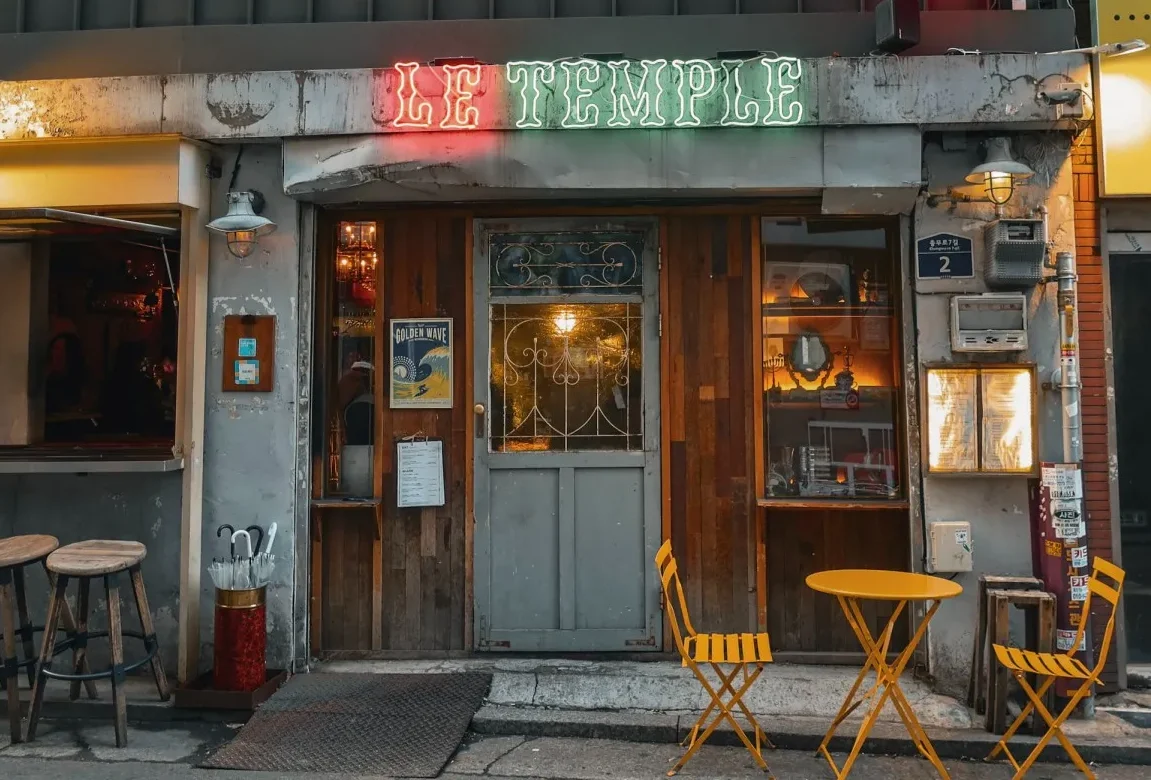
We stumbled upon this alleyway after climbing Namsan Park, in my sports gear I felt incredibly uncool in comparison to the people who were there. Not only that but it felt like a secret place (it isn’t) because we appeared to be the only tourists there. We ended up coming back another night for a few drinks and I preferred it to the other nightlife areas in Seoul like Itaewon and Hongdae.
Euljiro is a popular nightlife area for Seoul’s youth, there are many trendy bars that spill out onto the streets creating an energetic atmosphere. One bar dominates them all and that is Manseon Hof, a mammoth chicken and beer establishment.
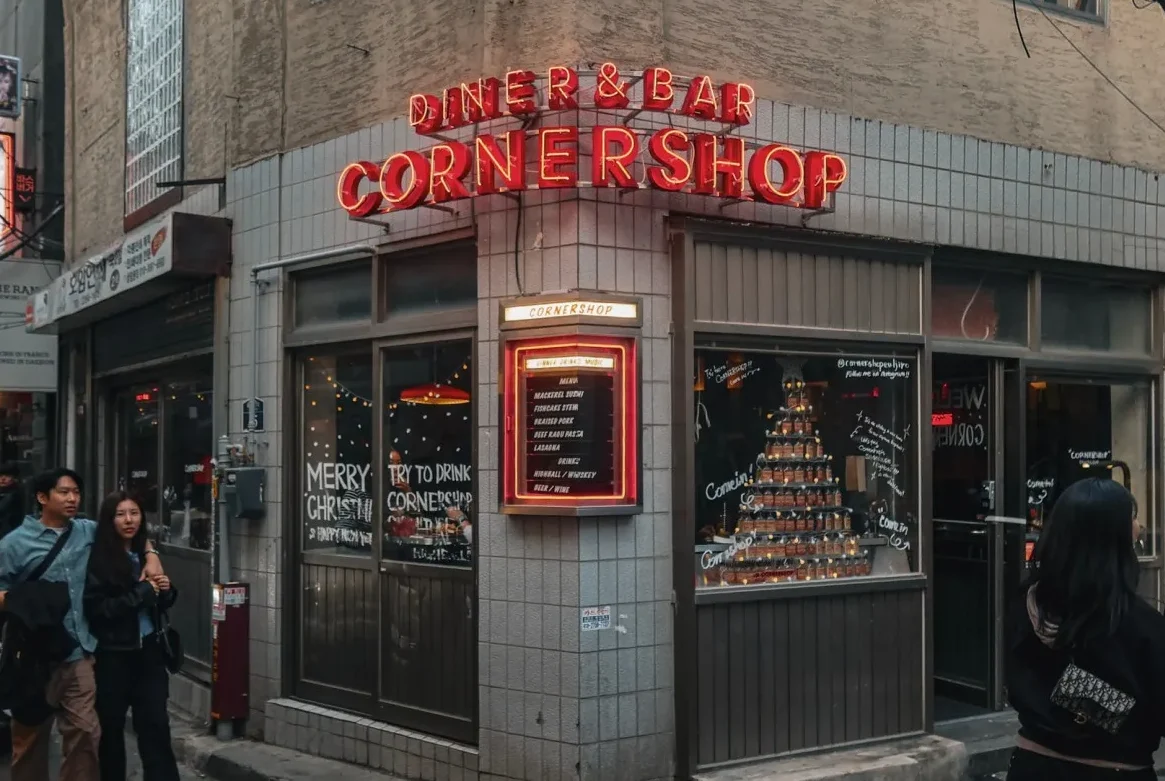
27. National Museum Of Korea
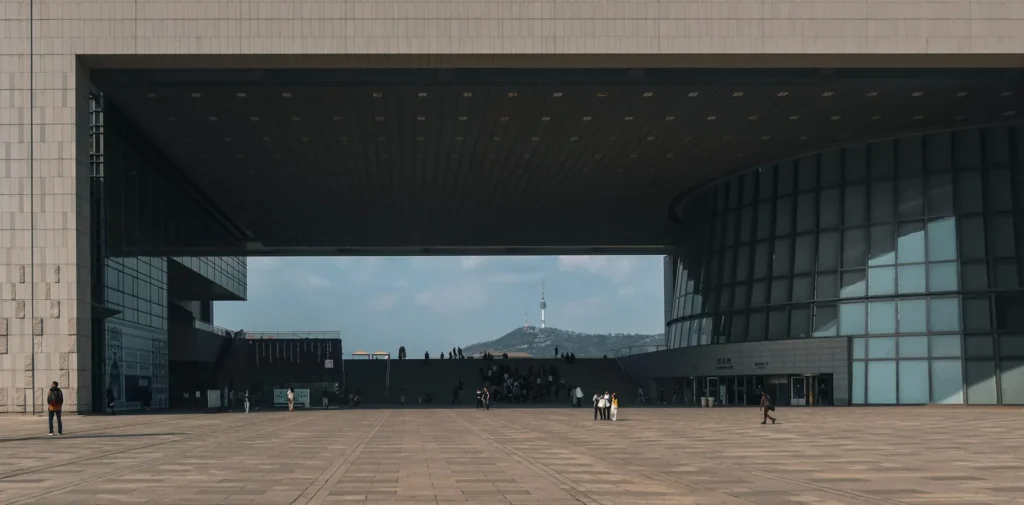
Free to enter museum focusing on the history and development of Seoul throughout the last 400 years, starting at the Joseon Dynasty up to Korea today. I recommend picking up a free audio guide at the information desk to understand the exhibits and their significance. There is also the option to scan a QR code at each exhibit.
At the end of the museum is a miniature model of Seoul at night, it’s so cool.
28. War Memorial Of Korea
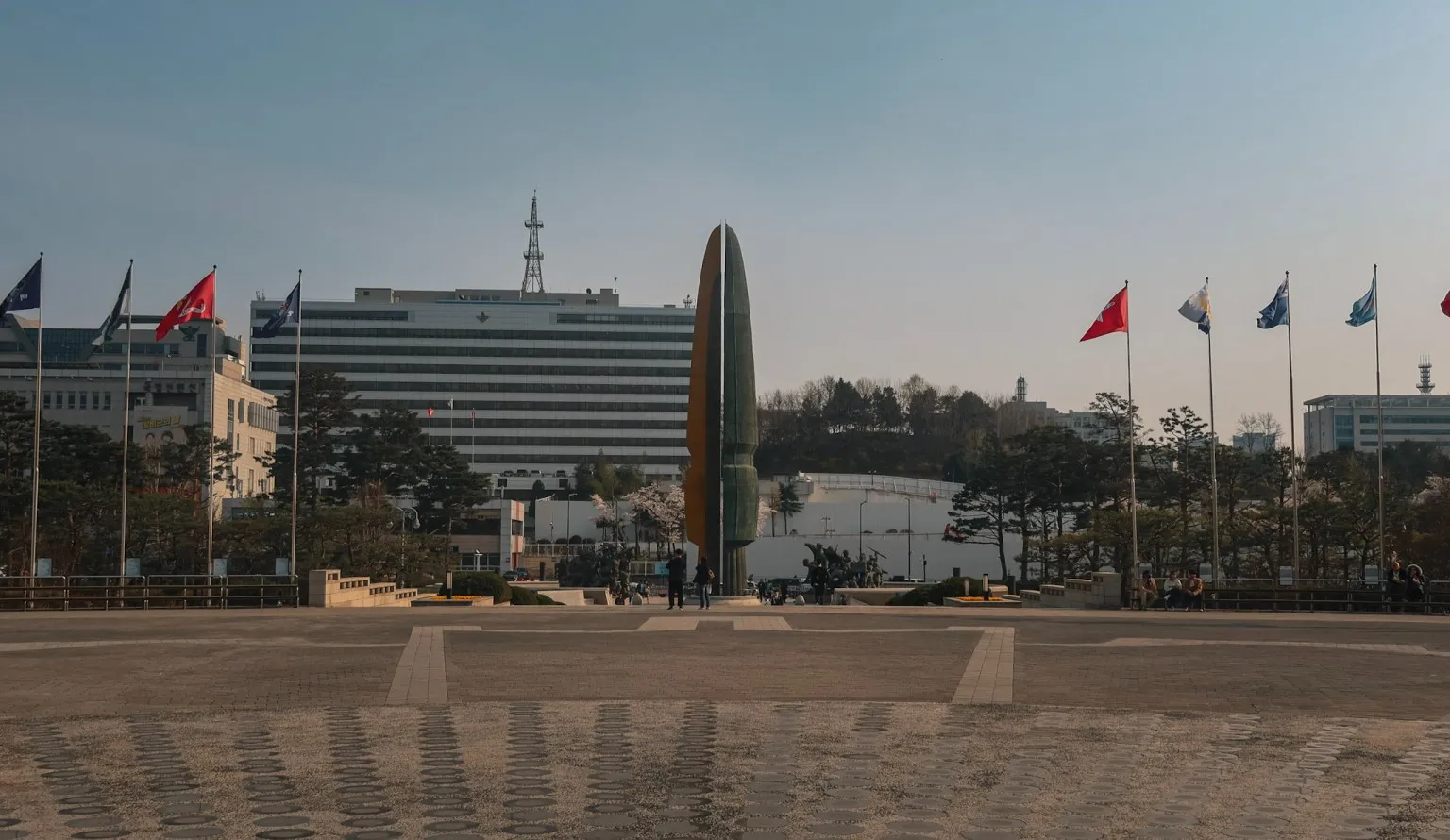
The last museum on the list is truly a must-visit for anyone wanting to understand South Korea’s journey to liberation. The fight for freedom has been a long and hard battle, from pushing back during the Japanese invasions (1592 – 1598), to suffering the Japanese occupation (1910 – 1945), and finally the Korean War (1950 – 1953) against North Korea who were supported by the Soviet Union and China. The Korean War alone resulted in the loss of approximately 1.3 million South Korean soldiers and civilians, a heavy price paid for freedom.
Spread over three floors and a large outdoor exhibition space, showcasing planes, ships and tanks that were used during these conflicts. There is a sombre tribute with the names of the fallen soldiers engraved on plaques, it really shows the magnitude of loss and the sacrifice that was made for the country’s liberty. The entry is also free.
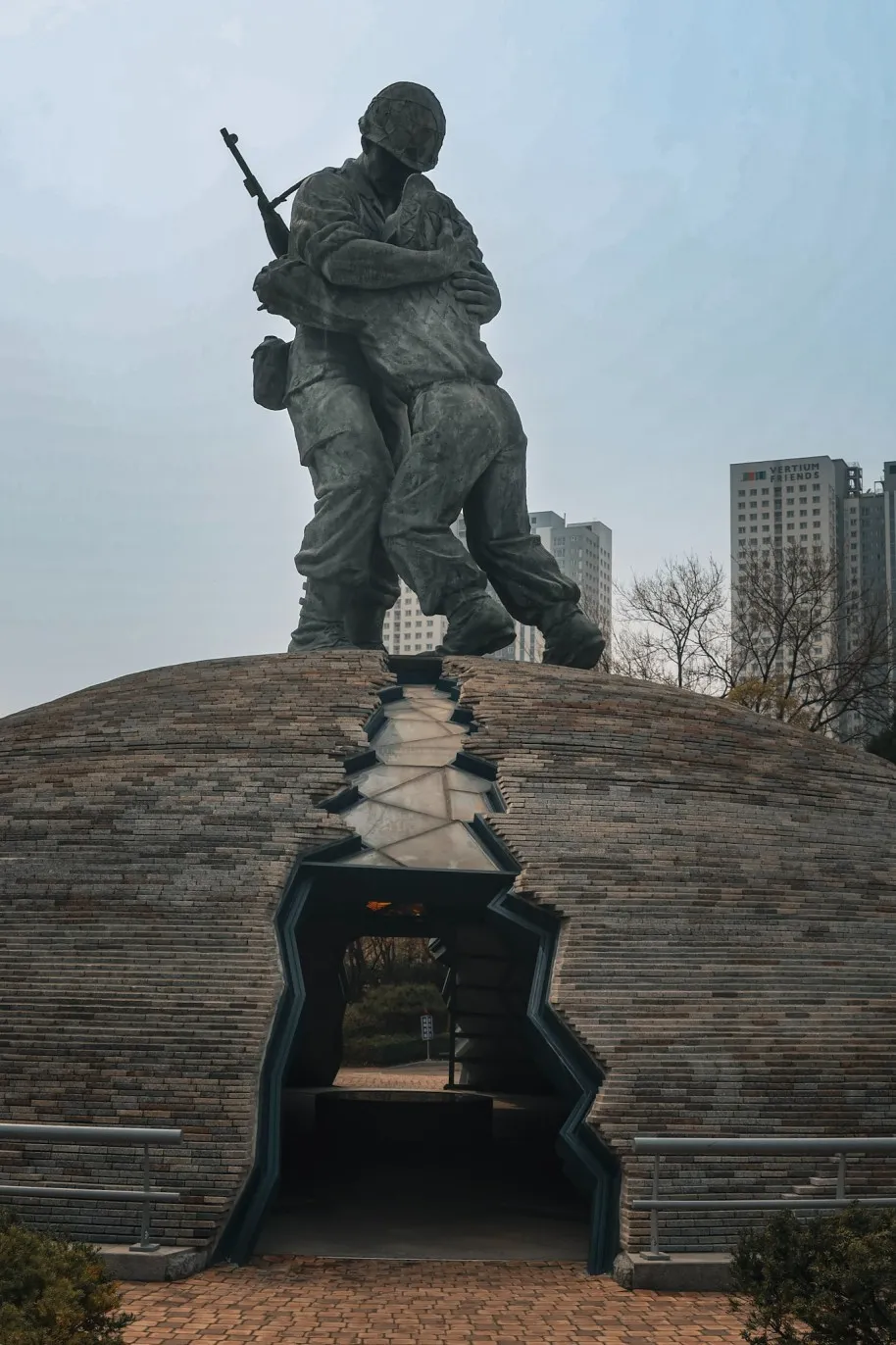
29. Video Arcades
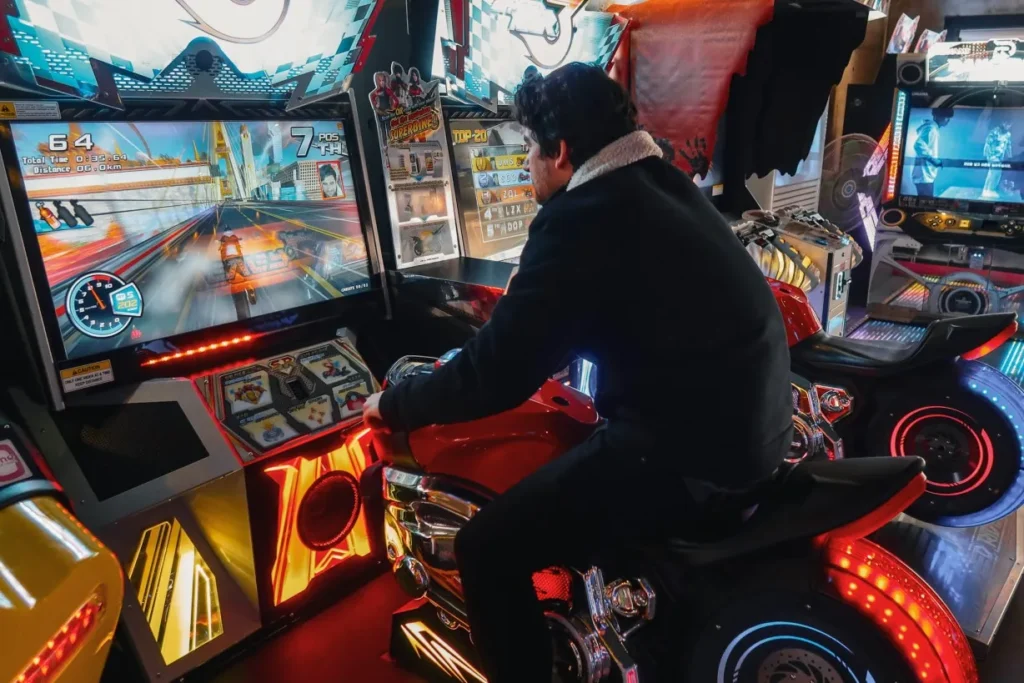
Arcades in Korea are more fun than competitive, I’m looking at you Japan! They are usually easy to spot with floor-to-ceiling glass and a pink LED light running the edge of the building.
Games include Mario Kart, Dance Dance Revolution, darts and claw machines. The claw machines are not too challenging like the ones in Japan so you can usually win something. This is something to do during a rainy day in Seoul.
There are many arcades all around Seoul, Zzang and G-Plex are popular chains. They are open late, typically until 12 am.
I won a really nice pair of fluffy slippers that were not only cute but super comfy.

30. HBAF
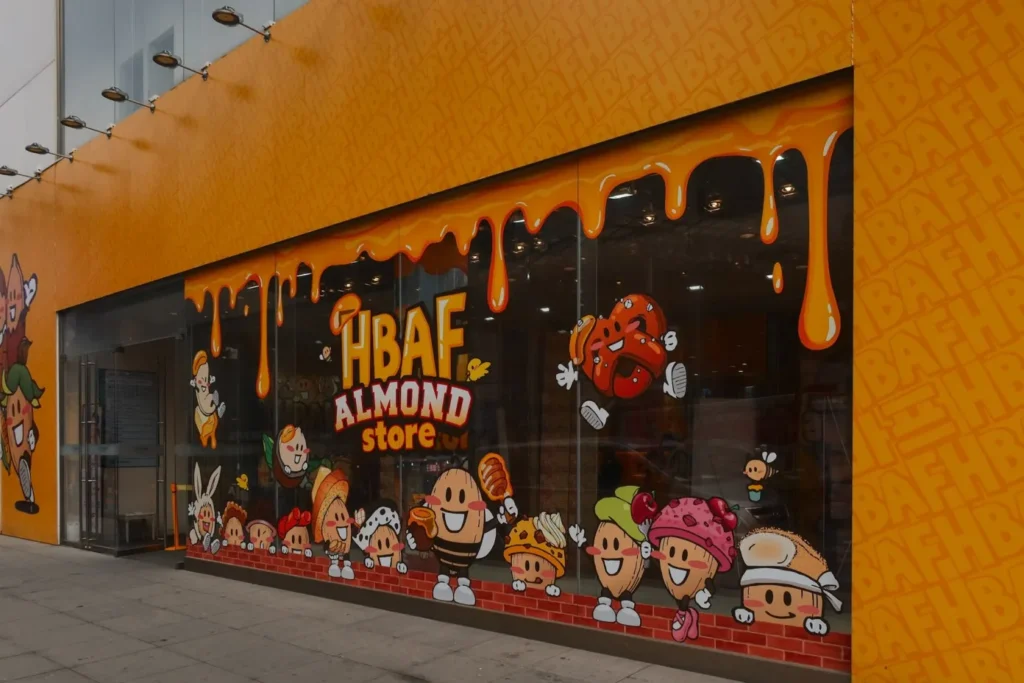
Budget travellers will love this thrifty thing to do in Seoul. HBAF is a popular company that makes a variety of flavourful almonds. While I don’t see many people talk about it online, their Myeongdong store has complimentary boxes of almonds. They have so many flavours, sweet and savoury, it’s fun trying them all. They also make for a great souvenir or gift for friends back home.
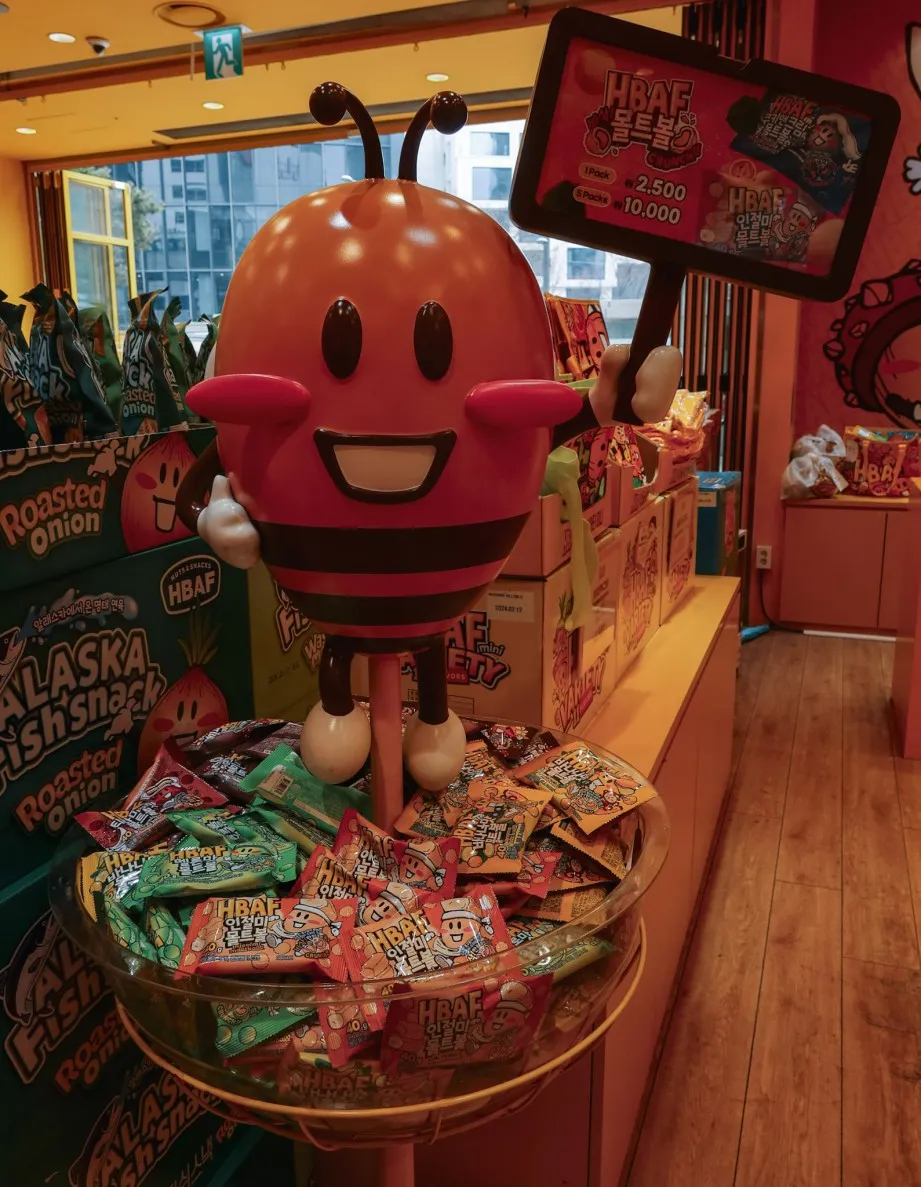
31. Customisable Bag At Wappen House
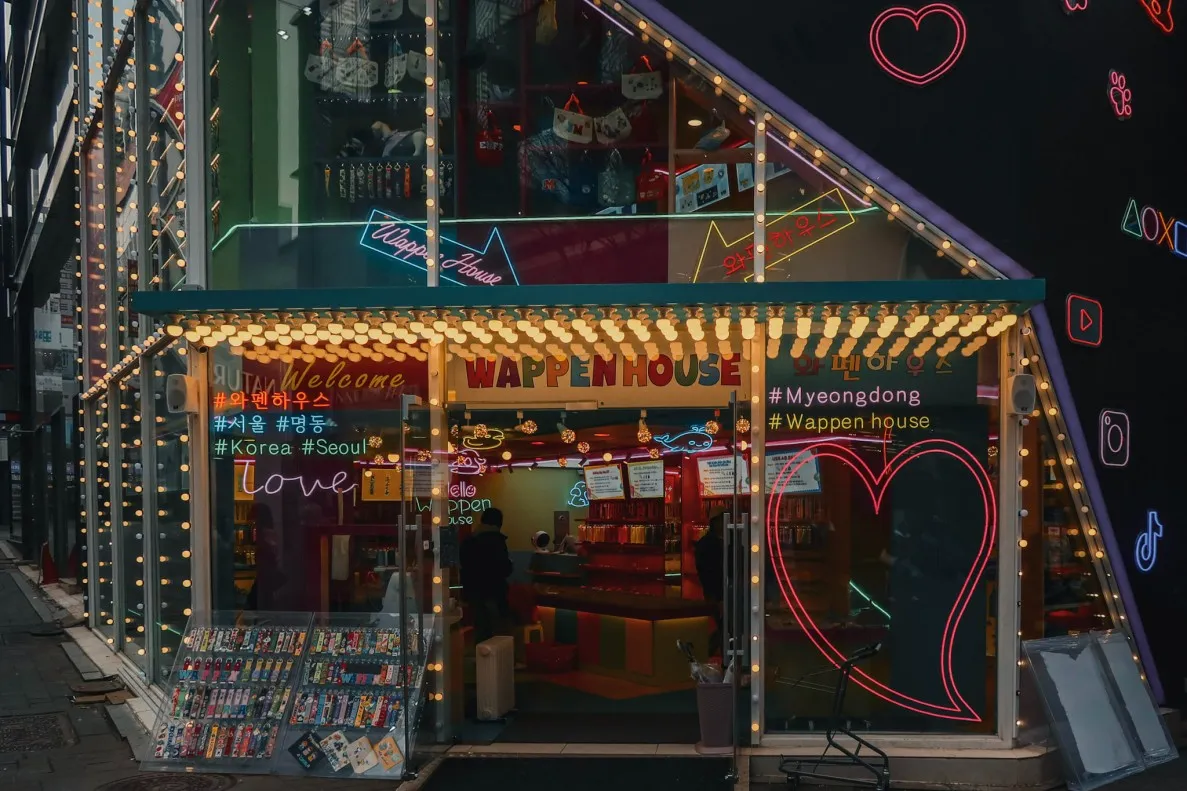
On the subject of souvenirs, there is one shop that has the coolest concept, Wappen House. Here, you customise a range of different items from tote bags and aprons to dog leads. The shop has a wide selection of badges that you choose to be embroidered on your item. You can also customise the base colour and text.
The result is a 100% personalised gift for you or someone at home.
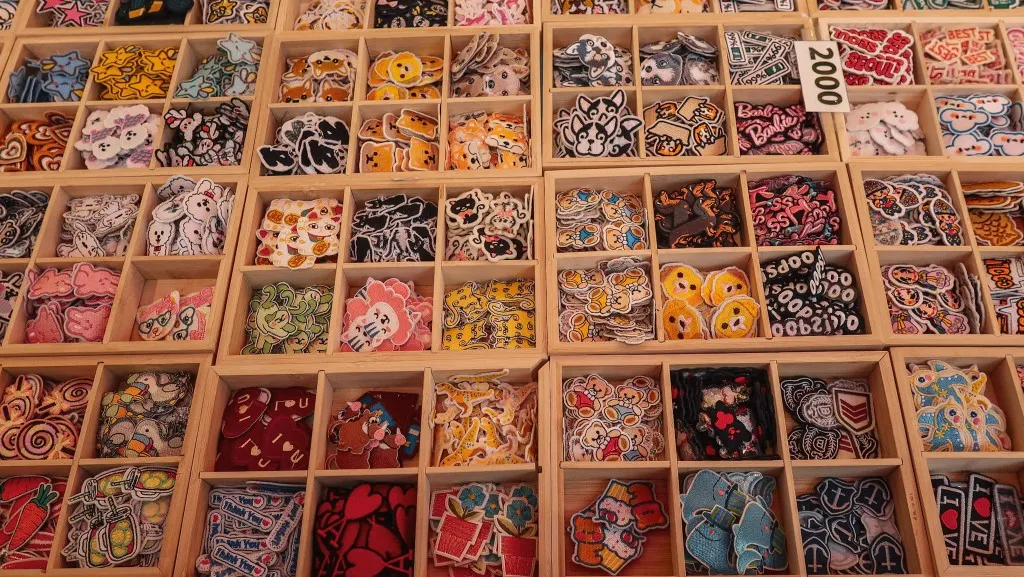
32. Namdaemun Market
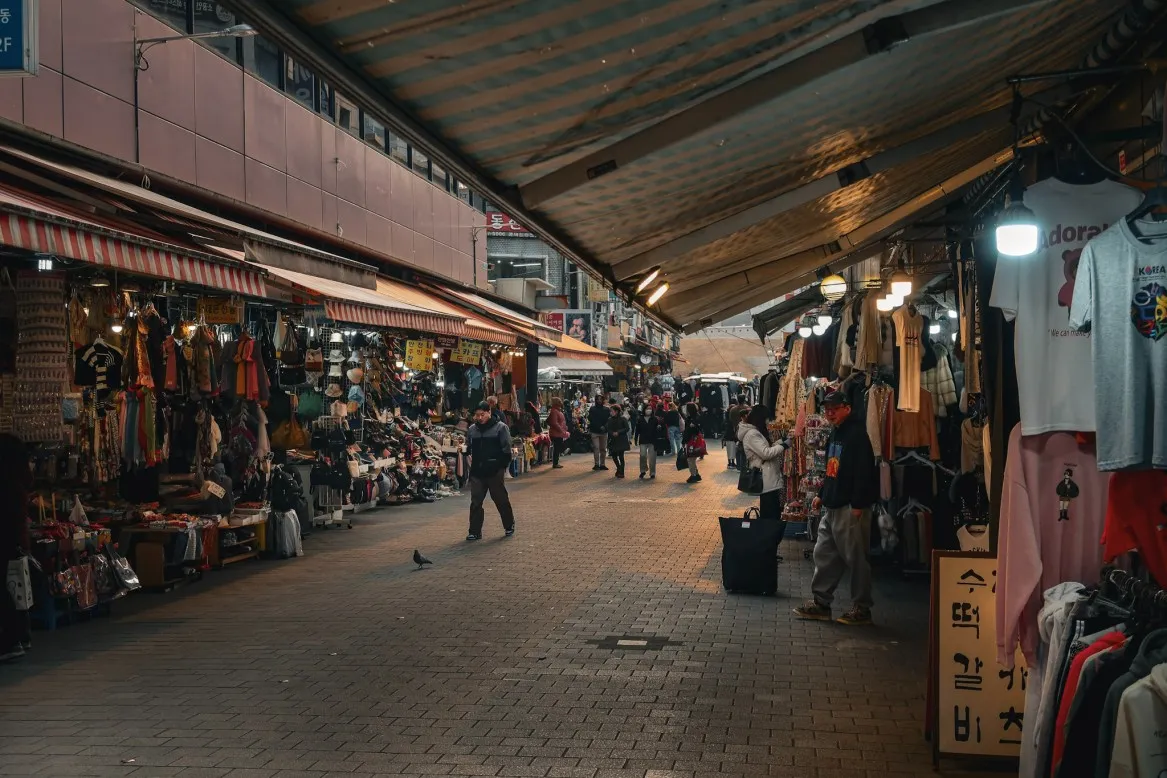
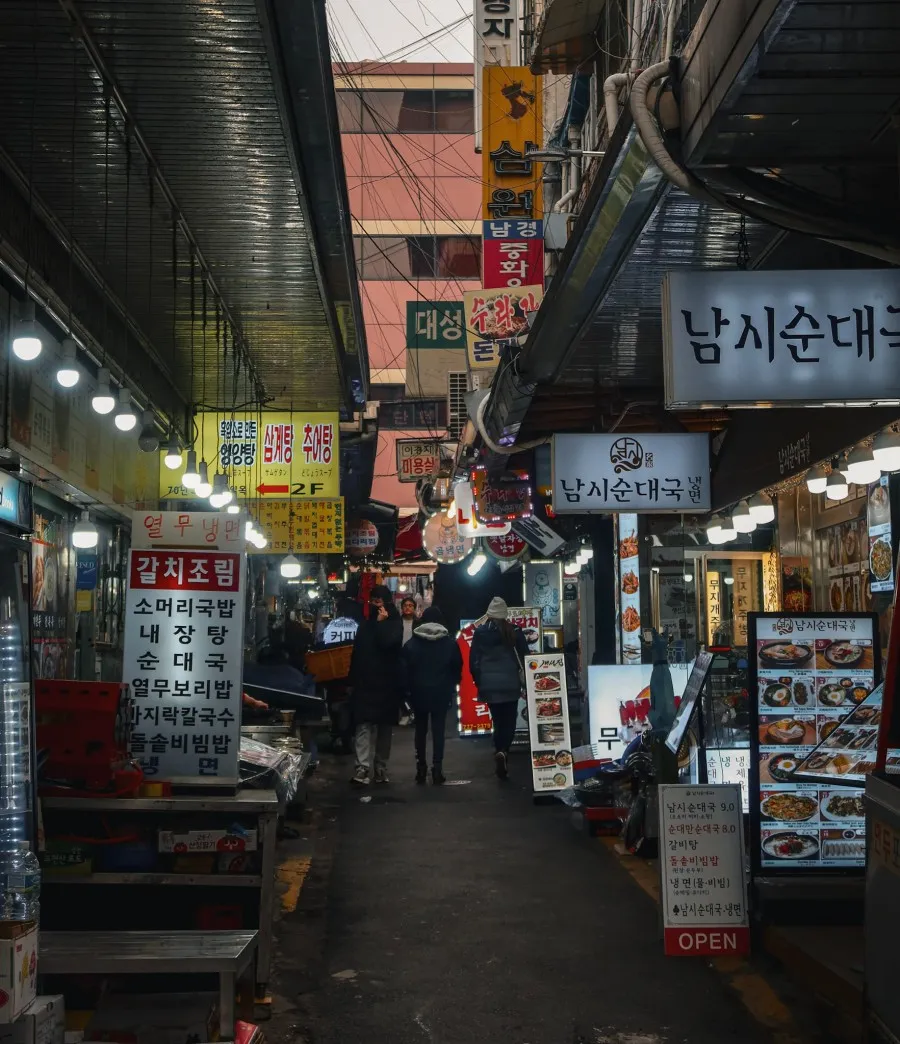
This giant traditional market is crazy busy and feels like the real Seoul.
Wander around and get lost in the maze of tiny streets jam-packed with clothes, suitcases, jewellery, skincare, and all kinds of food. Seriously, you can find anything here! The whole place is buzzing and it’s popular with both locals and tourists. It’s like stepping into a large treasure chest full of bargain deals.
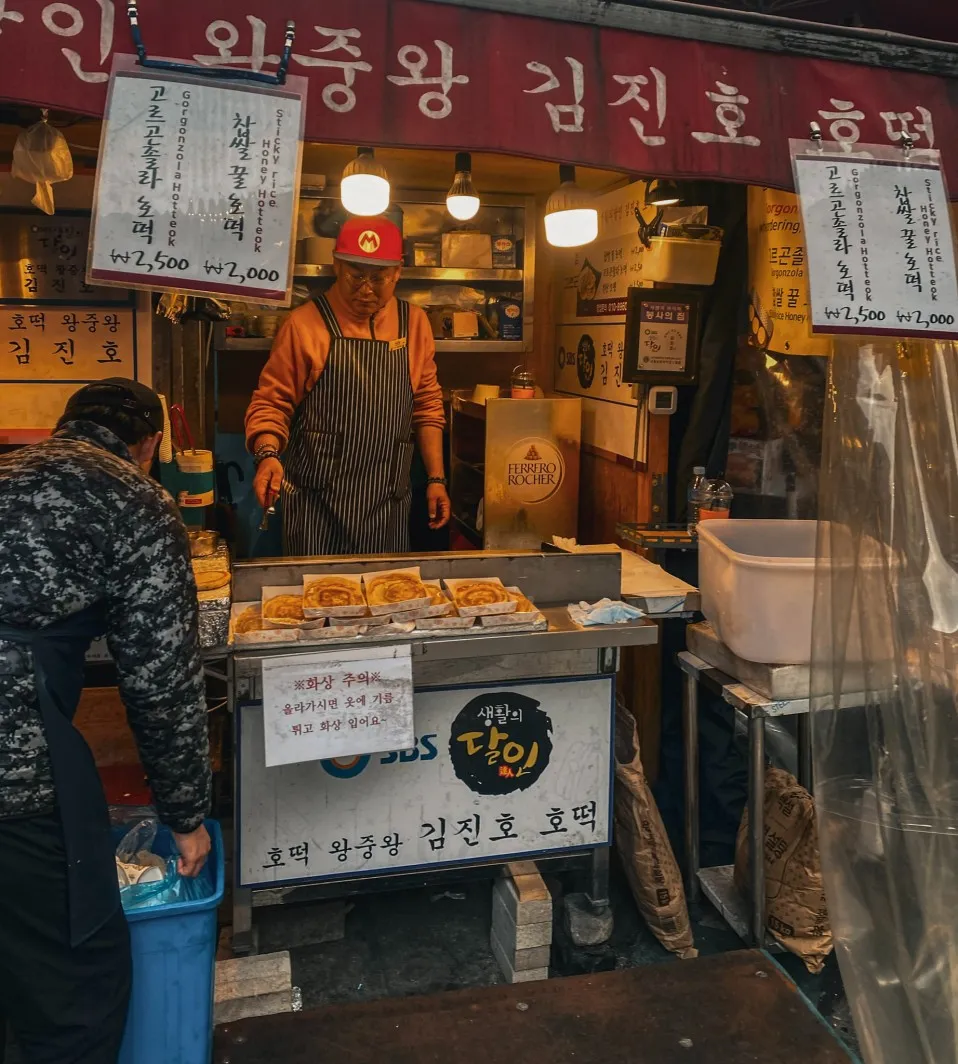
33. DMZ
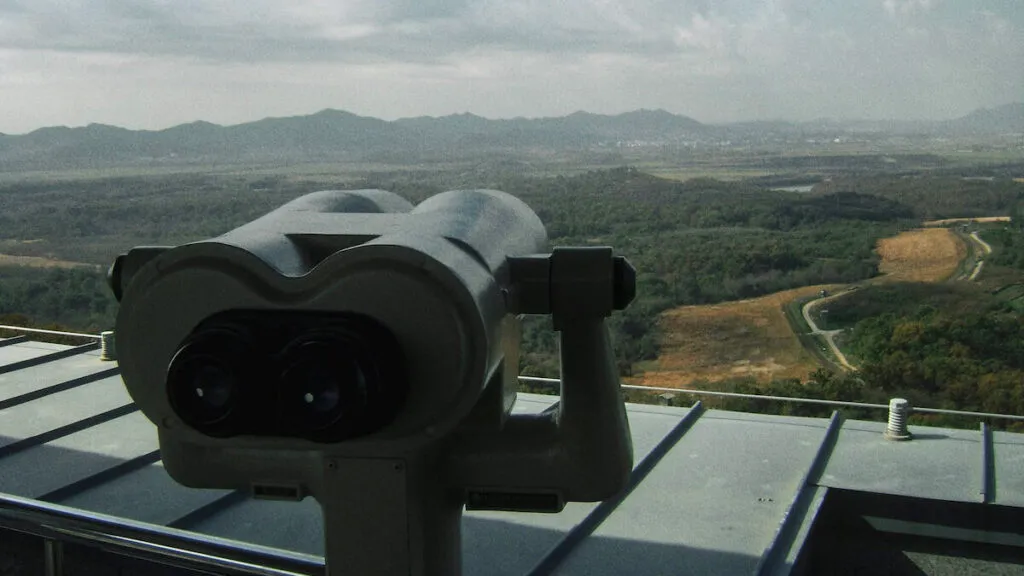
Just a mere 30 miles from the futuristic metropolis of Seoul is the totalitarian state of the Democratic People’s Republic of Korea. A. country with a population restricted from food, opportunity, the internet and free speech to name just a few things. Only recently a North Korean citizen was executed due to listening and distributing K-Pop music from South Korea.
Standing in between the North and South is the DMZ. This stands for the demilitarised zone, it was established in 1953 at the end of the Korean War. It serves as a 2.4 mile (4 km) buffer zone between the North and South, and is the most heavily militarised border in the world. It is a significant piece of past and present Korea.
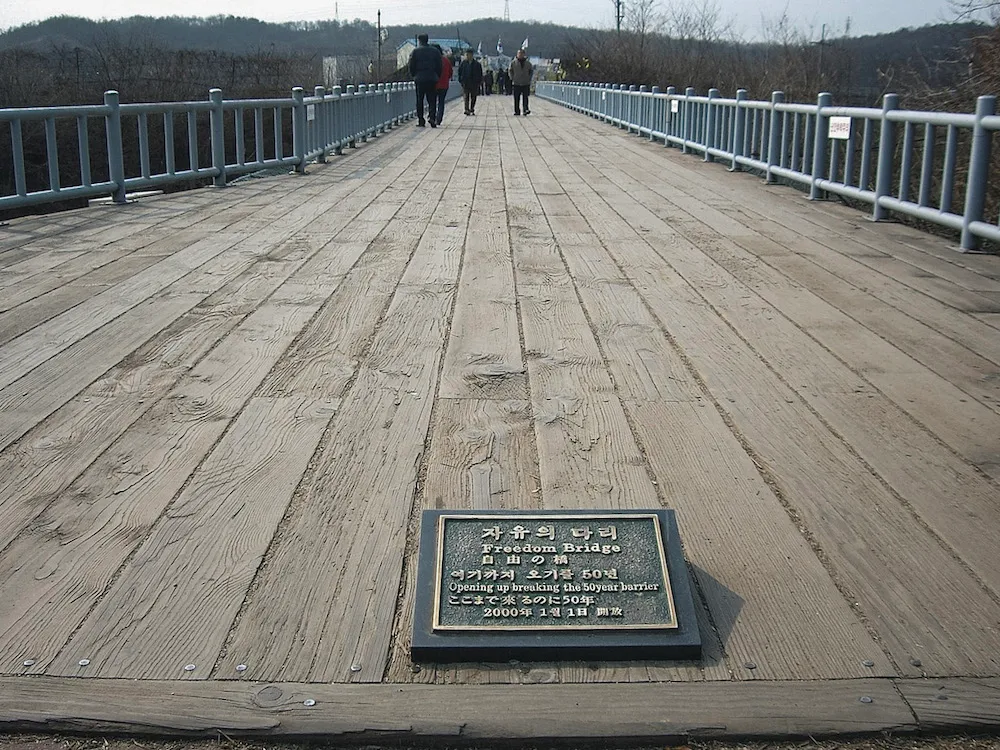
The easiest way to visit the DMZ is by booking a day tour. The tour includes visiting the Freedom Bridge, taking a peak into North Korea from Dora Observatory, Gamaksan Suspension Bridge and Ungye Falls.
How To Get Around Seoul
The most efficient mode of transport in Seoul is the metro. The stations are easy to navigate, the trains are clean, comfortable and fast. To use the metro you need a t-money card, these can be purchased at the airport or prior to departing. You just load the card with money at machines in stations or at the cash register in convenience stores.
The subways are not 24-hour, they typically run from 5:30 am until midnight, which makes getting home after a night out tricky. We got stuck in town twice, waiting it out for hours in KFC is just not a vibe. There is a night bus system with 14 routes that operate between 00:30 and 03:30.
Seoul FAQ
How many days is enough in Seoul?
There is so much to do in Seoul, the city has enough activities to keep you busy for weeks. To see the highlights 5 days is a good amount of time, this allows for a day trip such as the DMZ. For the ultimate trip, 10 days in Seoul will allow you to see everything.
I would recommend not spending less than 3 days in Seoul to ensure you don’t miss out on the good stuff.
Can I speak English in Seoul?
Younger generations in Korea have some level of English however they tend to be shy speaking it, the older generations are not as proficient in the language. Interestingly, the way that English is taught in schools is less focused on conversation and more so what you need to know to pass. You can certainly get by travelling Seoul with just the English language but it is always best to learn the very basics of Korean like hello, yes, no, thank you, how much is this?
The city is tourist-friendly, the subway signs are in both Korean and English, and restaurants typically have an English menu, and if all else fails Google Translate will help!
Is Korean food healthy?
Like all cuisines there are healthy and unhealthy options. Korean food can be carb heavy with lots of sugar and salt added. I personally found it very hard to eat healthy unless I was cooking.
The food you’ll encounter mostly will be fried chicken, K-Dogs, tteokbokki, yachaejeon (fried pancake), japchae, kimchi jjigae (spicy kimchi stew) and hotteok – these are all very delicious but wouldn’t be considered healthy.
If you want healthy options then try bibimbap, kimchi, or Haejang-guk (hangover stew). K-BBQ’s are also an excellent option, although red meat and lots of salt are used, the sides of vegetables make it a more balanced choice than other Korean meals.
Do you tip in Korea?
Tipping is not expected, it can even be met with confusion. People might round up but in general it’s just not customary.
Is Seoul walkable?
Absolutely! Seoul is the perfect city to walk around, it’s pedestrian-friendly with interesting alleys to wander down. It’s a large city, therefore to see it all transportation is required.
Related Posts
10 Day Seoul Itinerary
Where To Stay In Busan, Best Areas + Hotels
28 Best Things To Do In Haeundae
How To Spend 1 Day In Seoul
Guide To Busan’s Haeridan-gil Street
1-Day Haeundae Itinerary – Busan’s Iconic Beach Destination
Busan Sky Capsules – Everything You Need To Know
Things To Do In Kaohsiung: Itinerary
10 Best Things to Do in Jiufen Old Street
Minoh Park | Off The Beaten Path In Osaka
31 Fun Things To Do In Osaka For First Timers (with map)
Hiking Fushimi Inari-Taisha | 2025 Guide
Leave a Reply